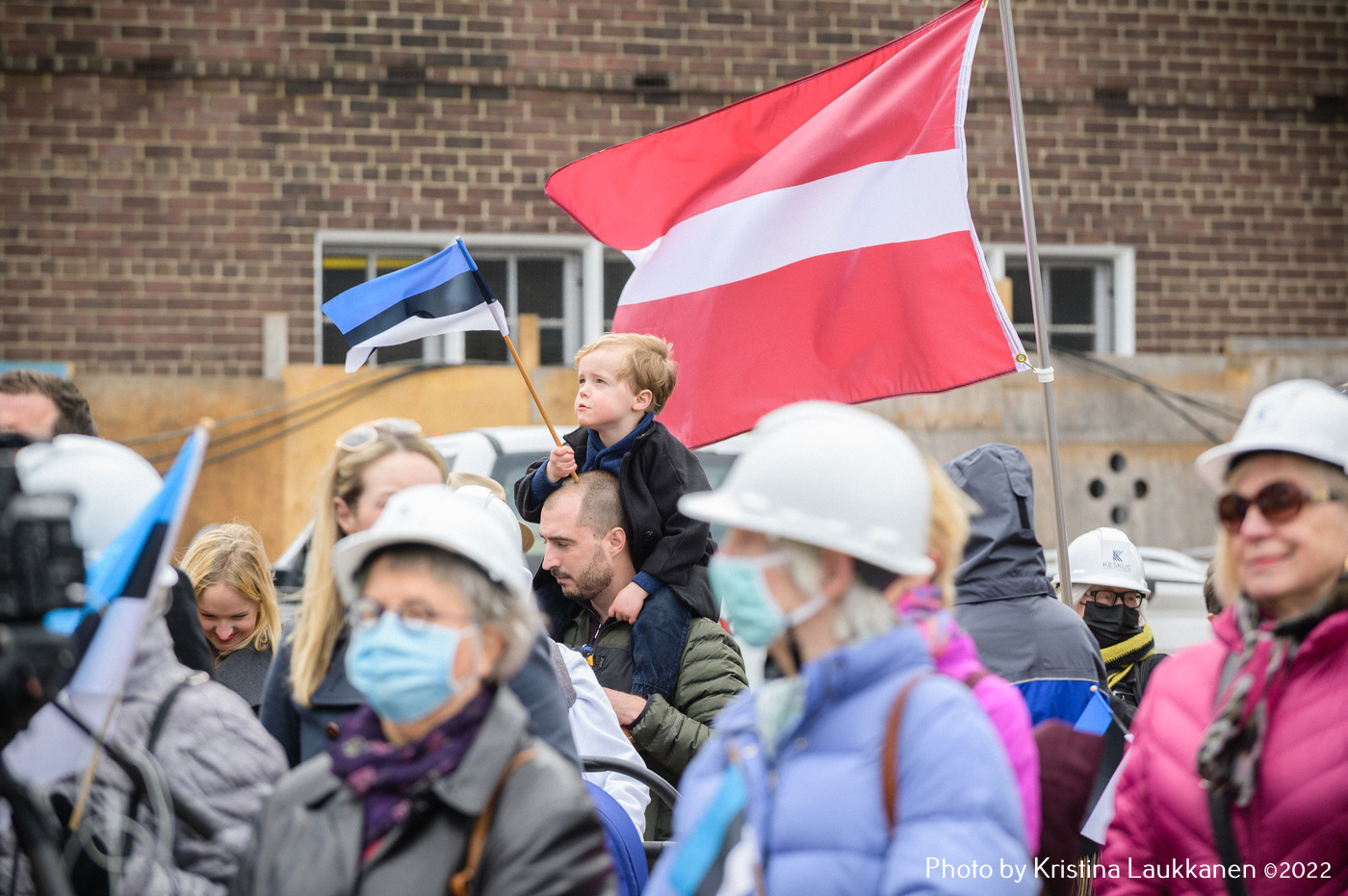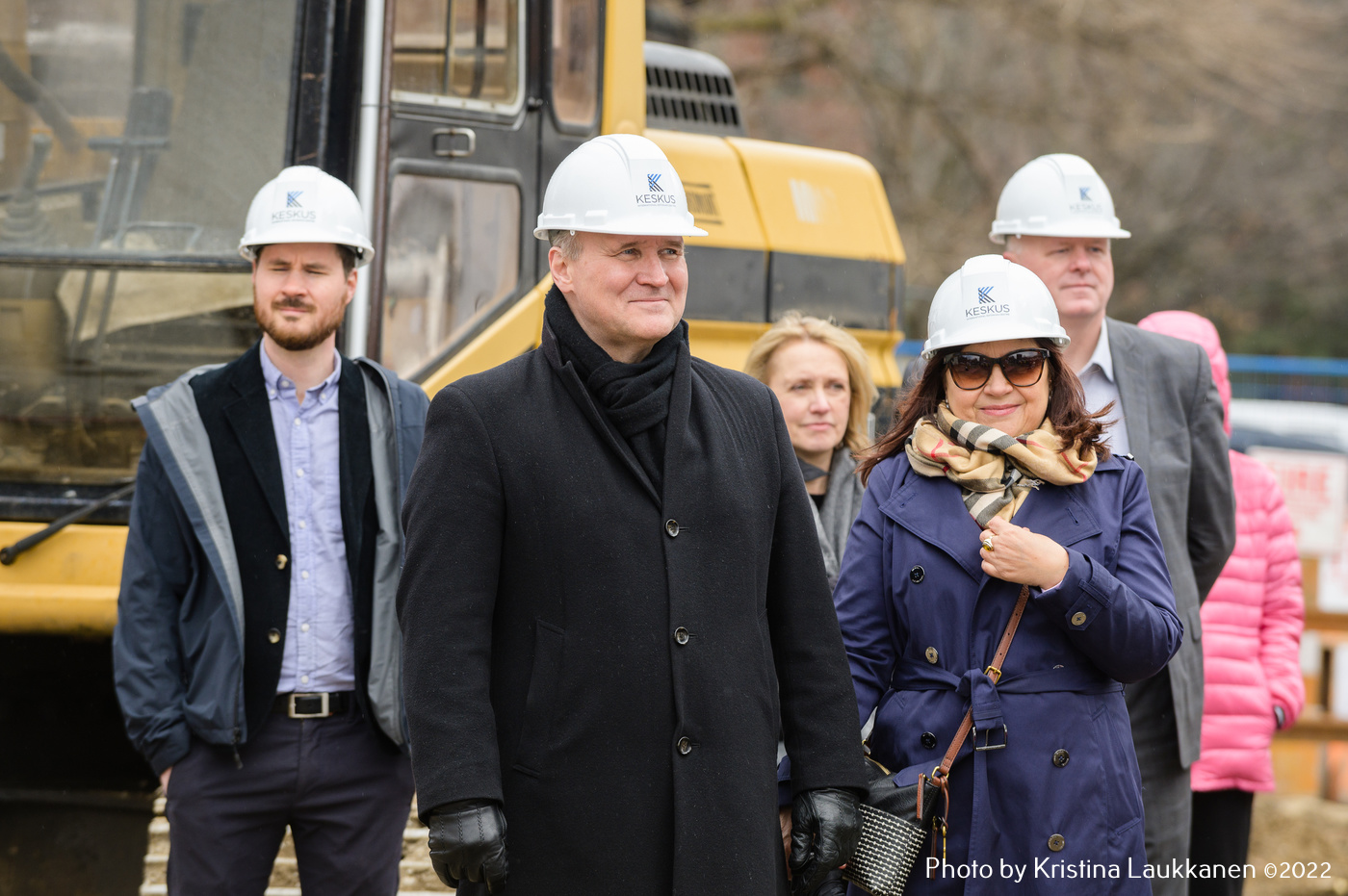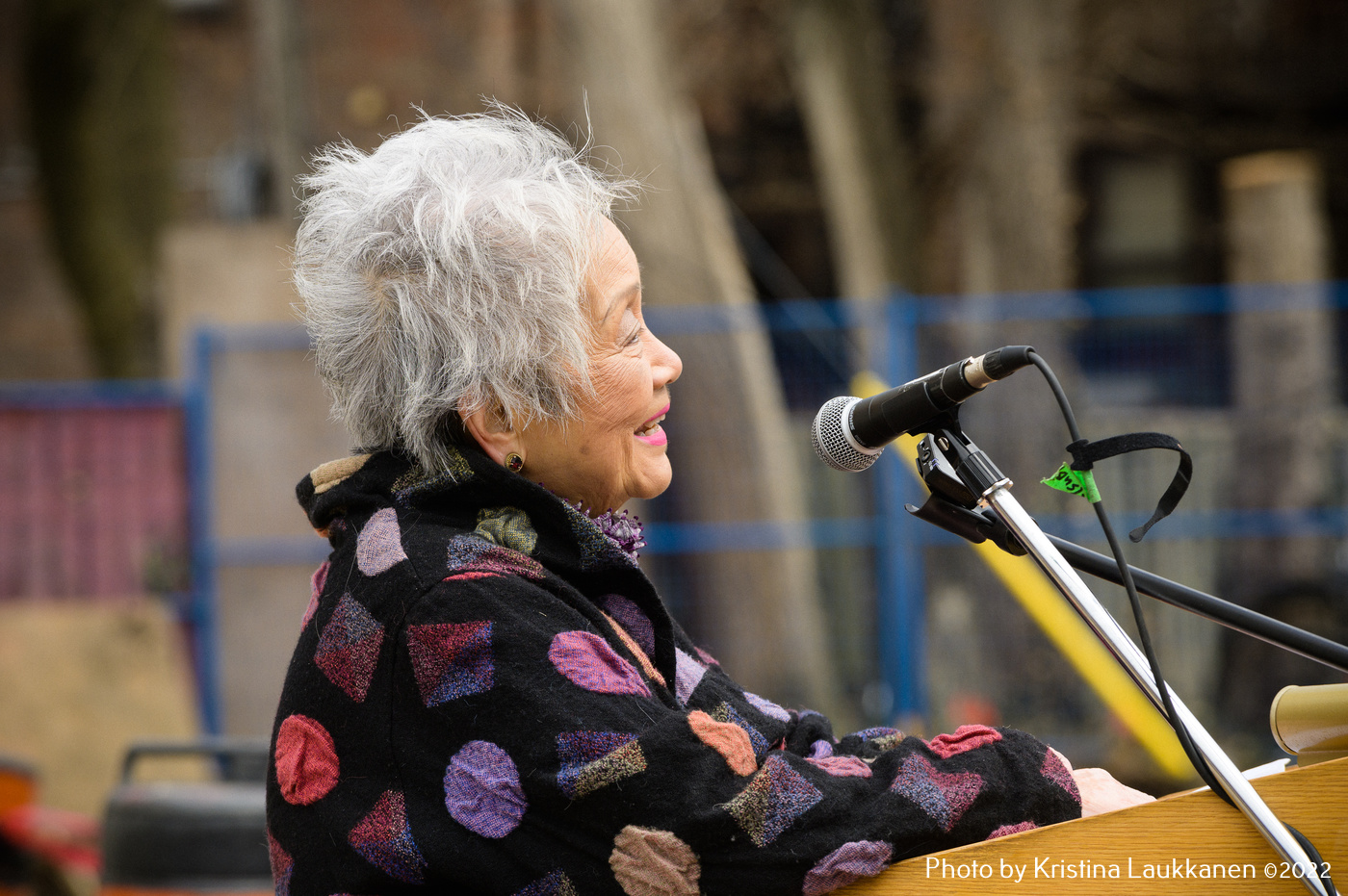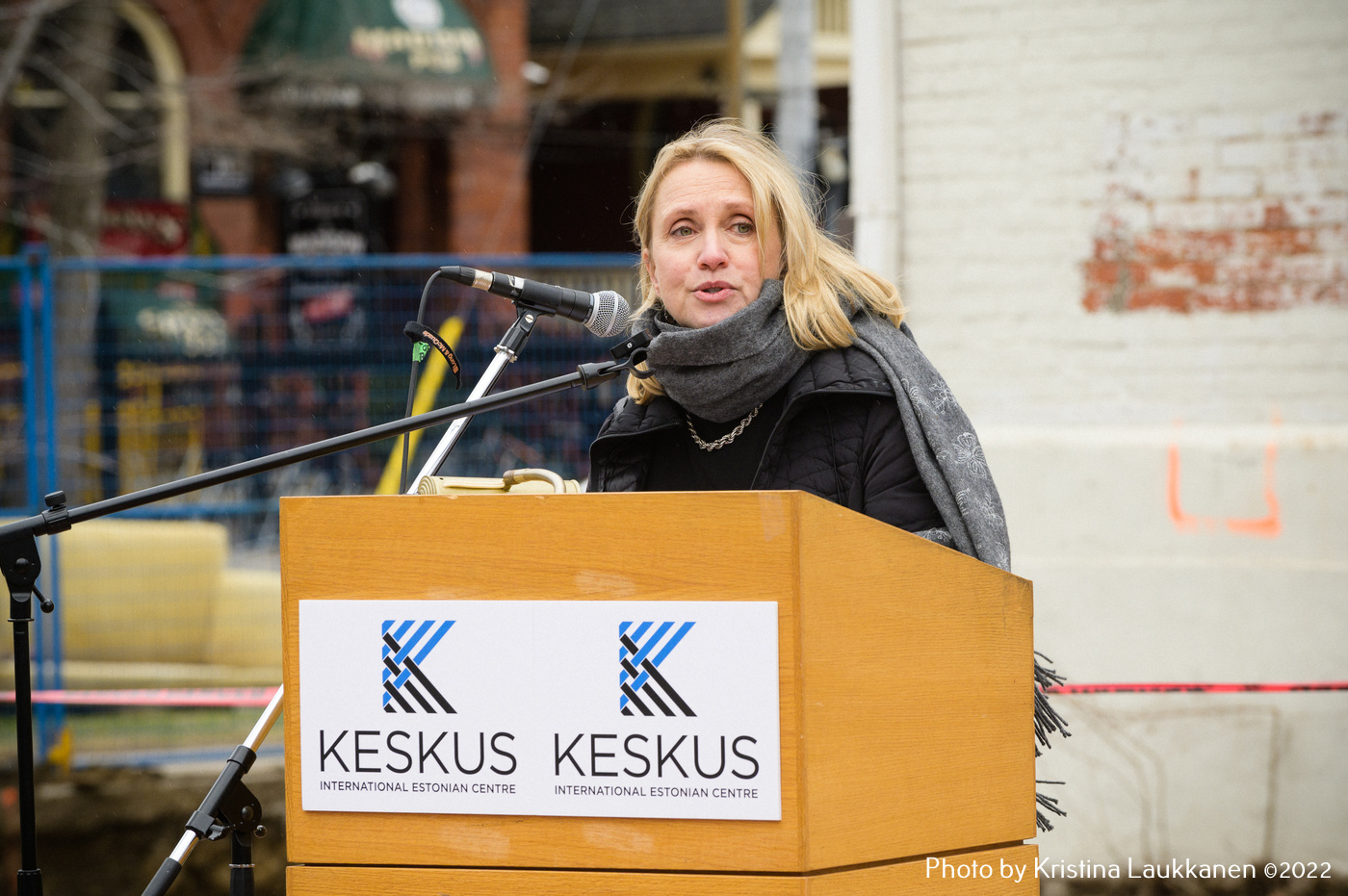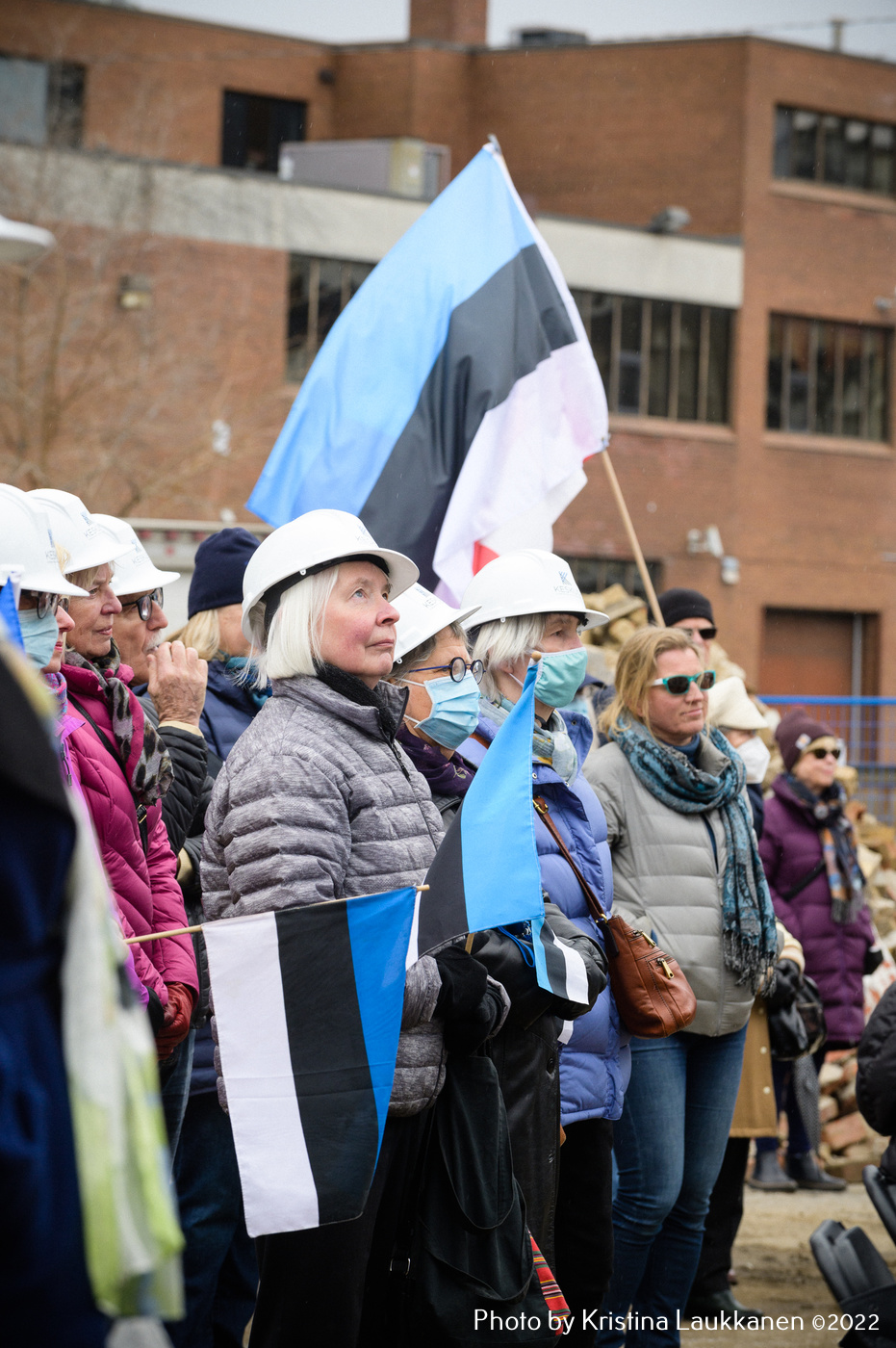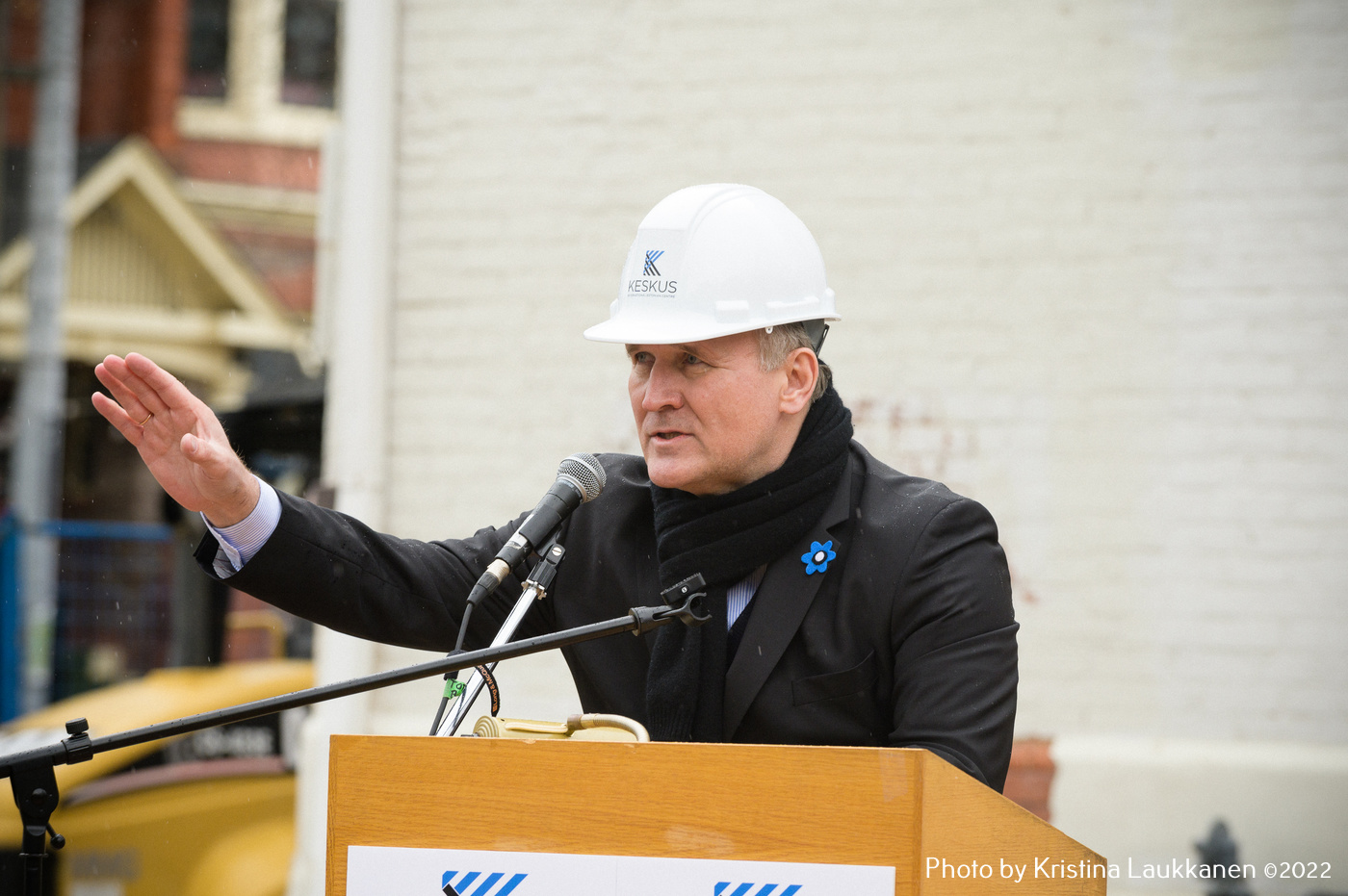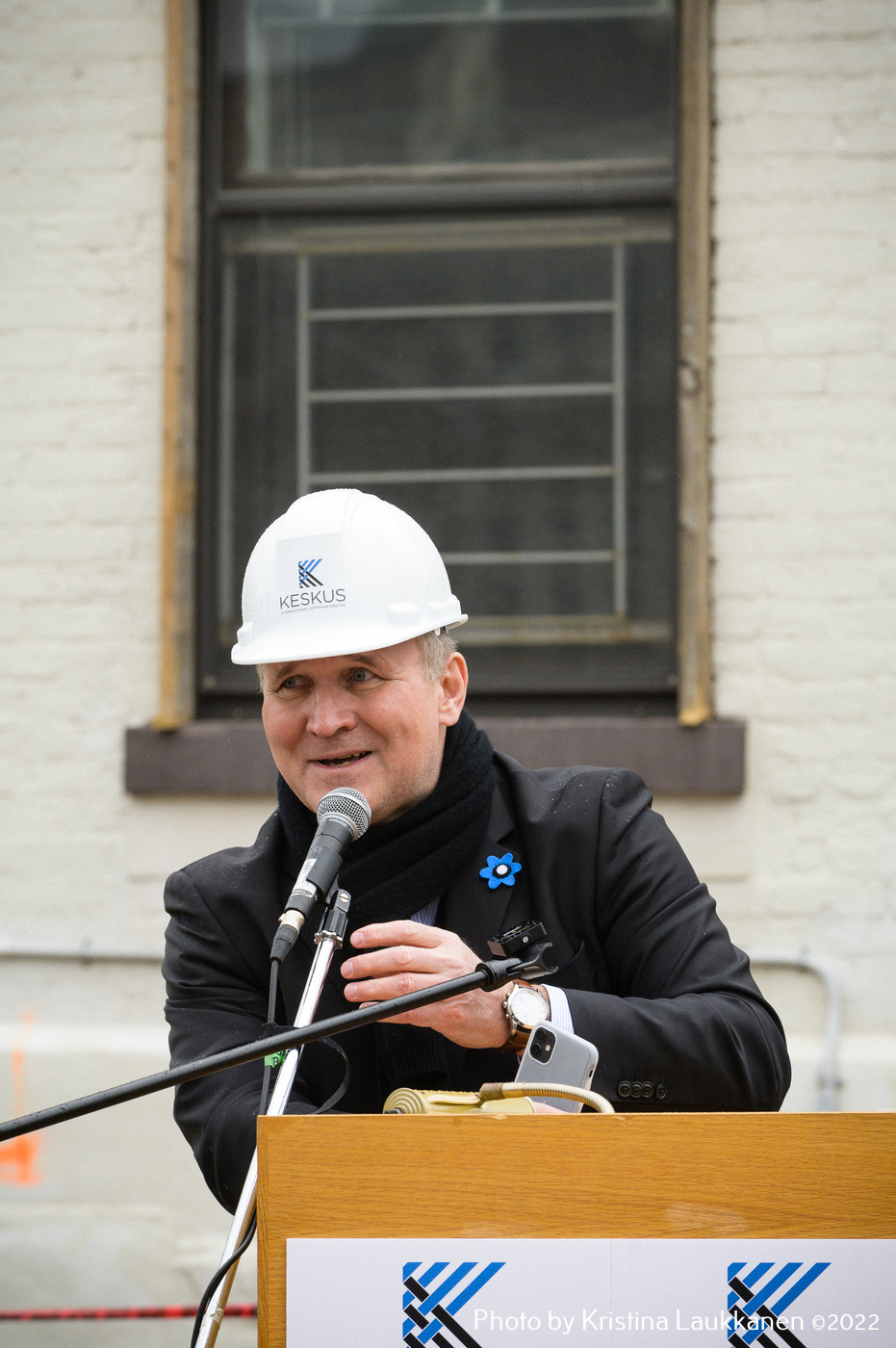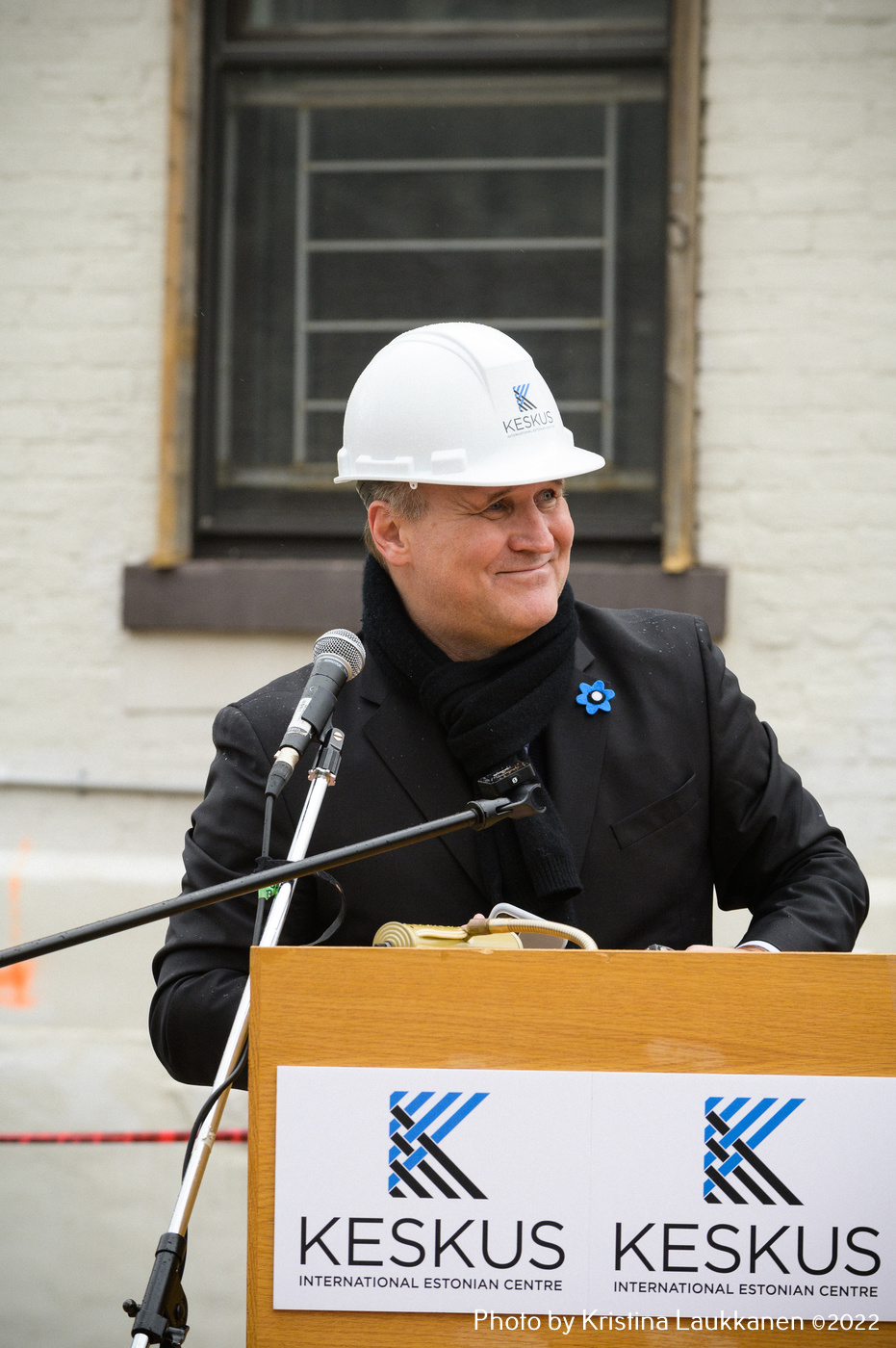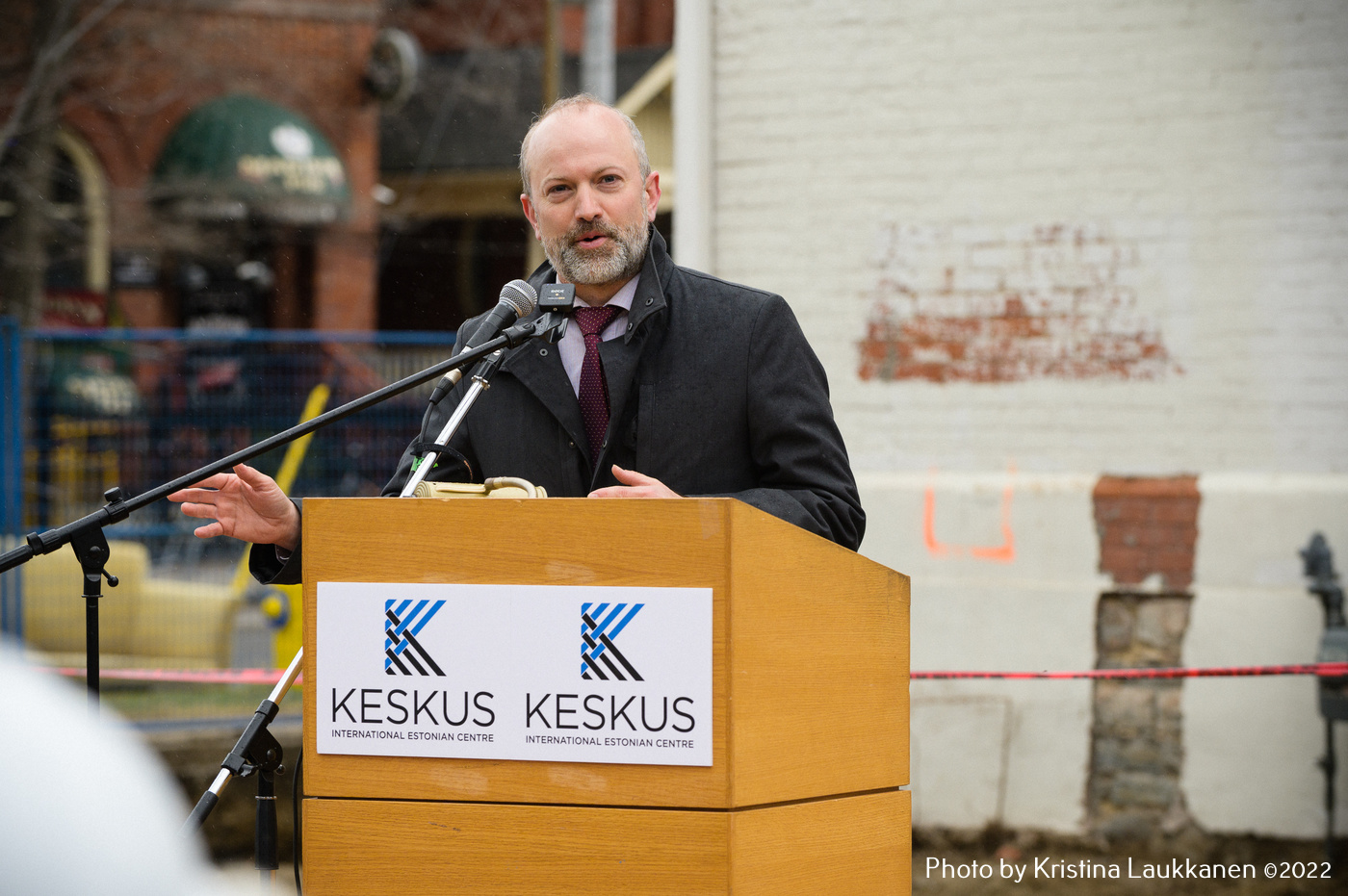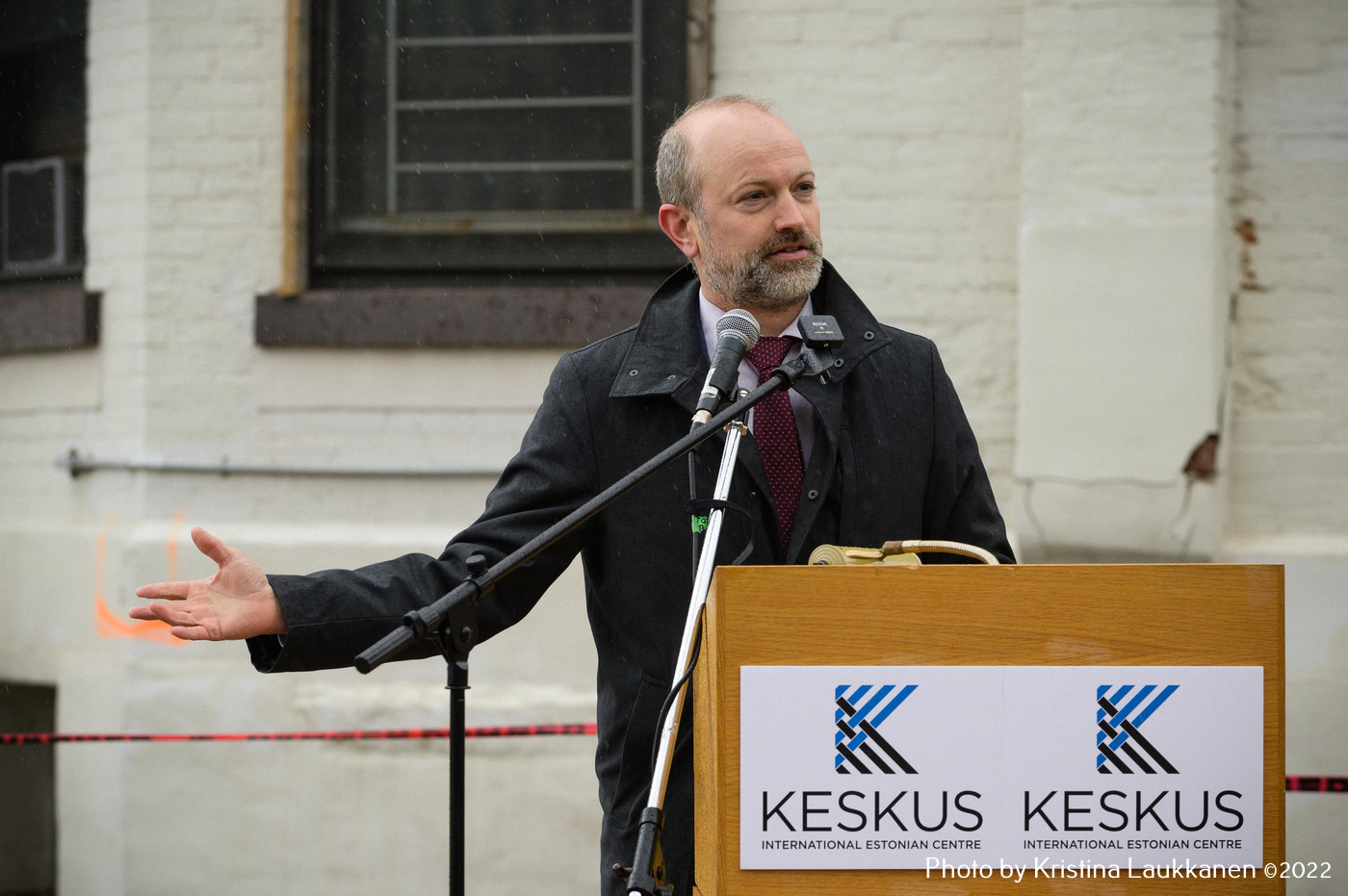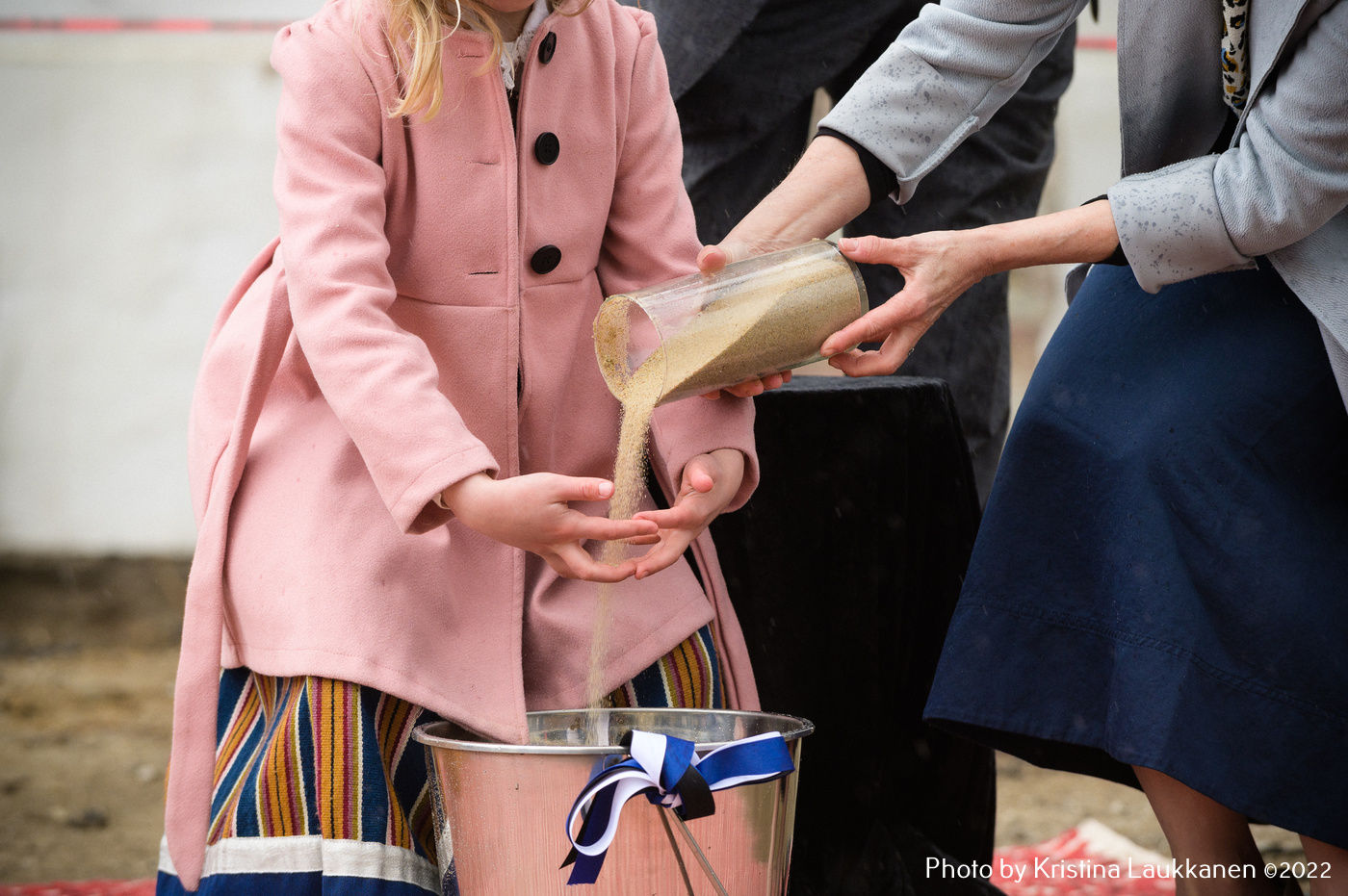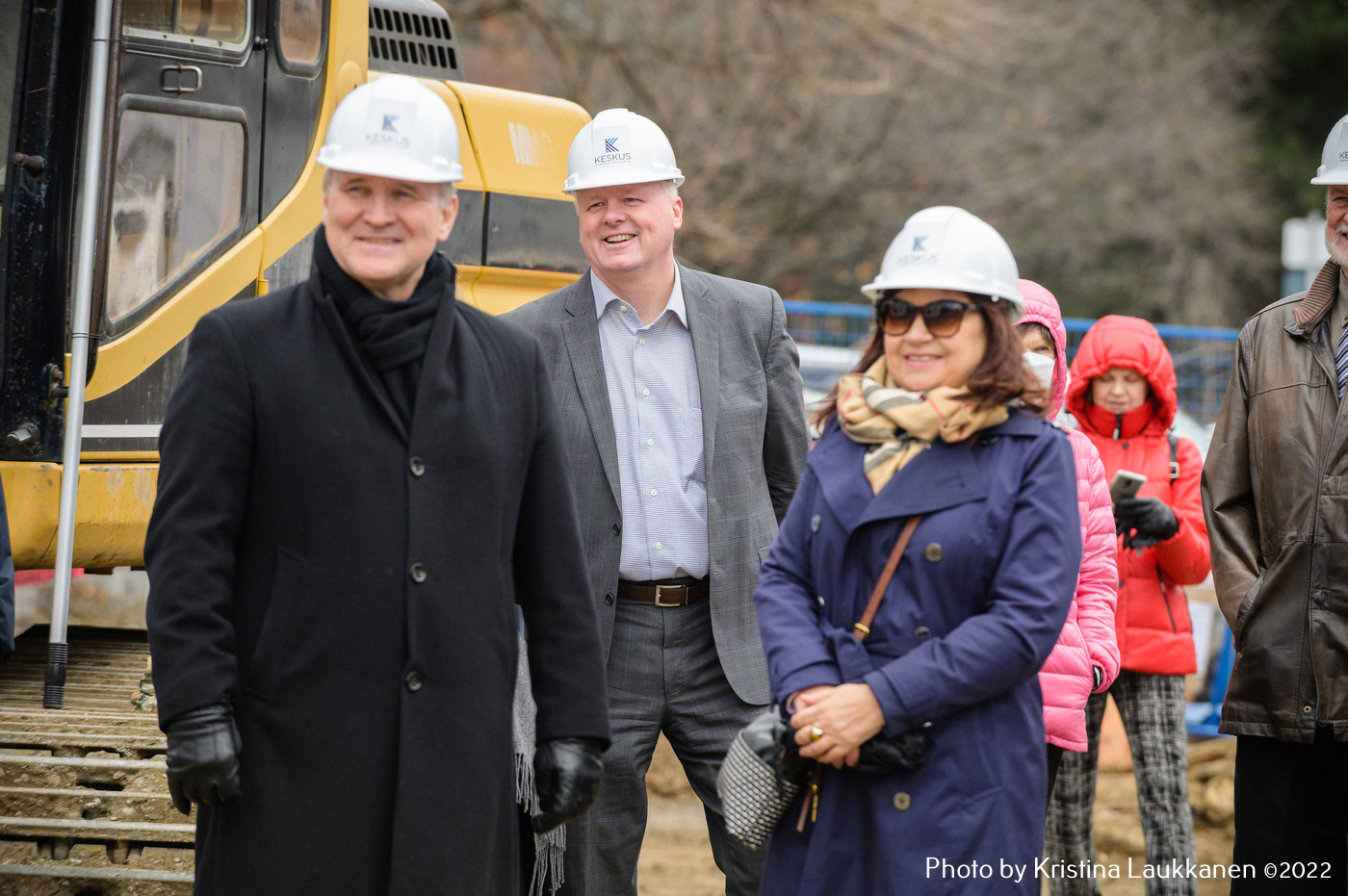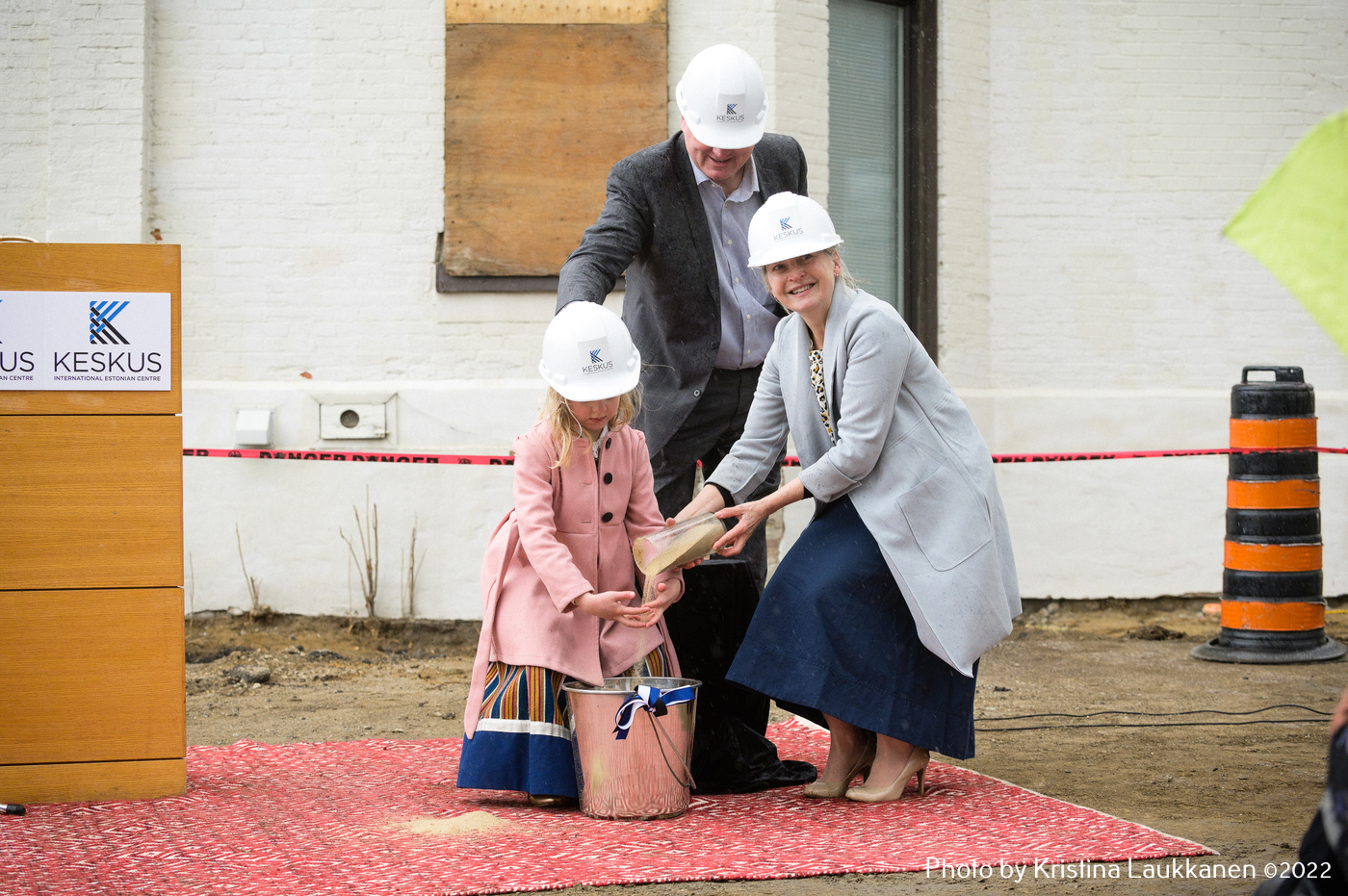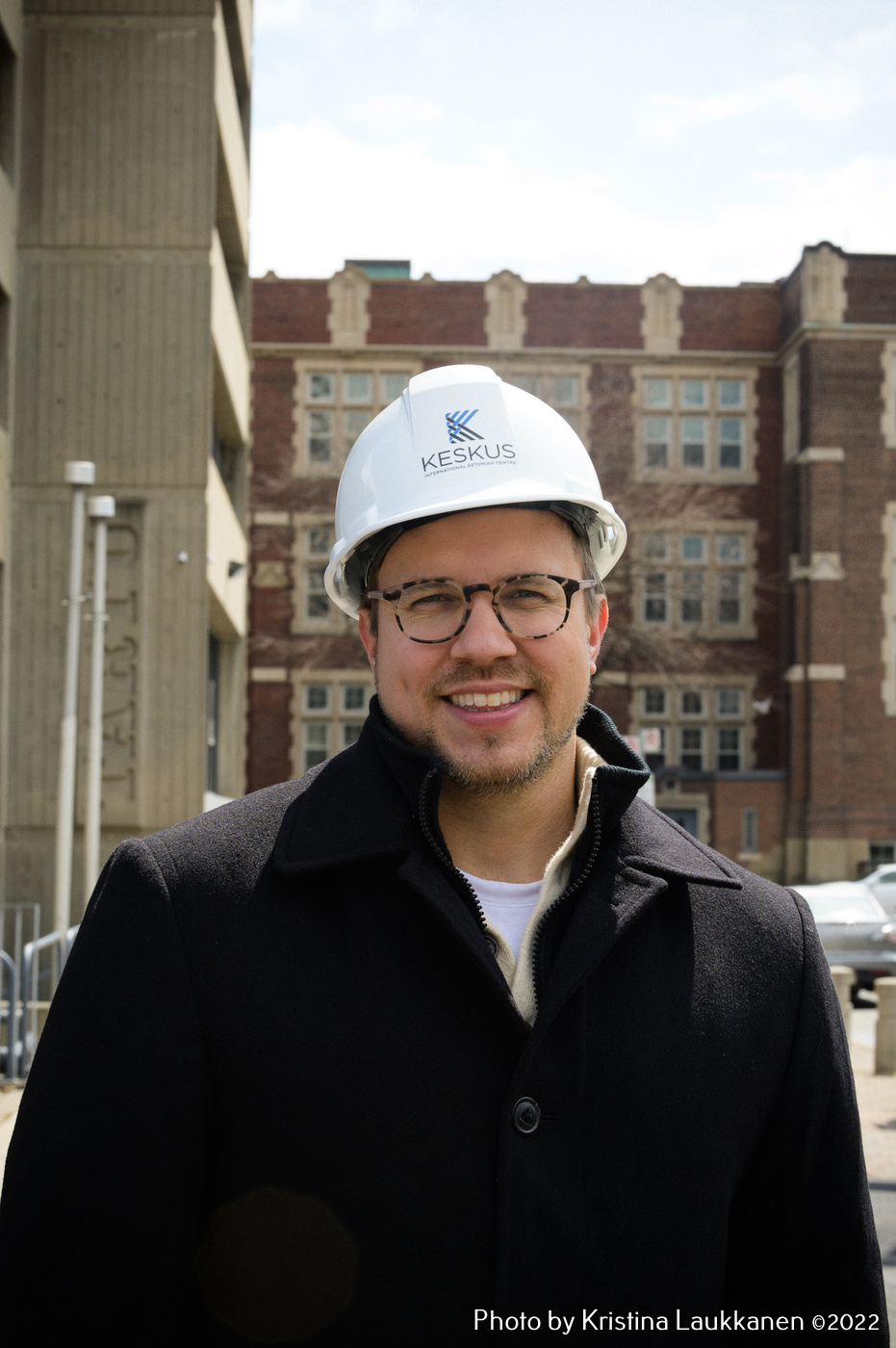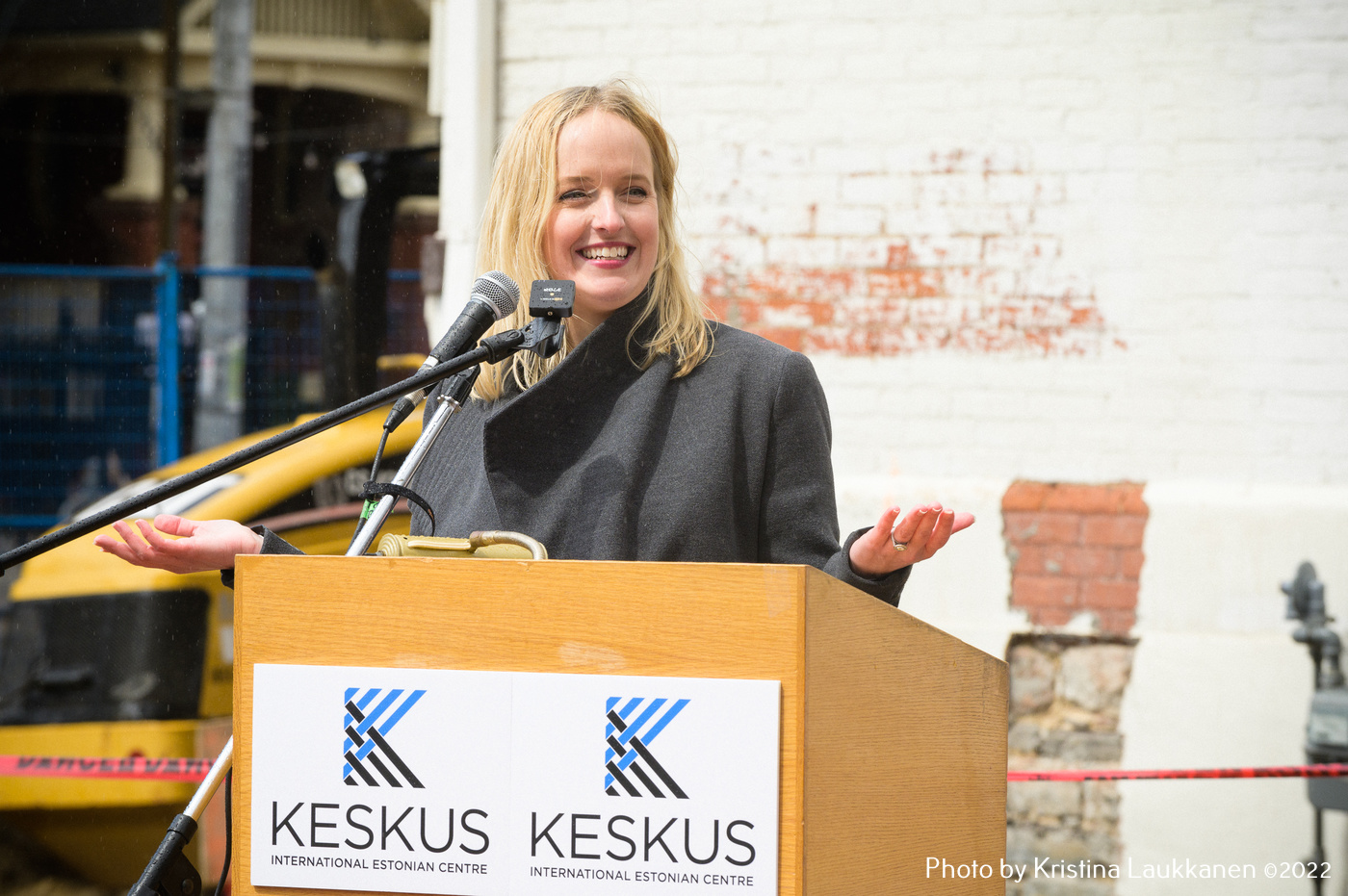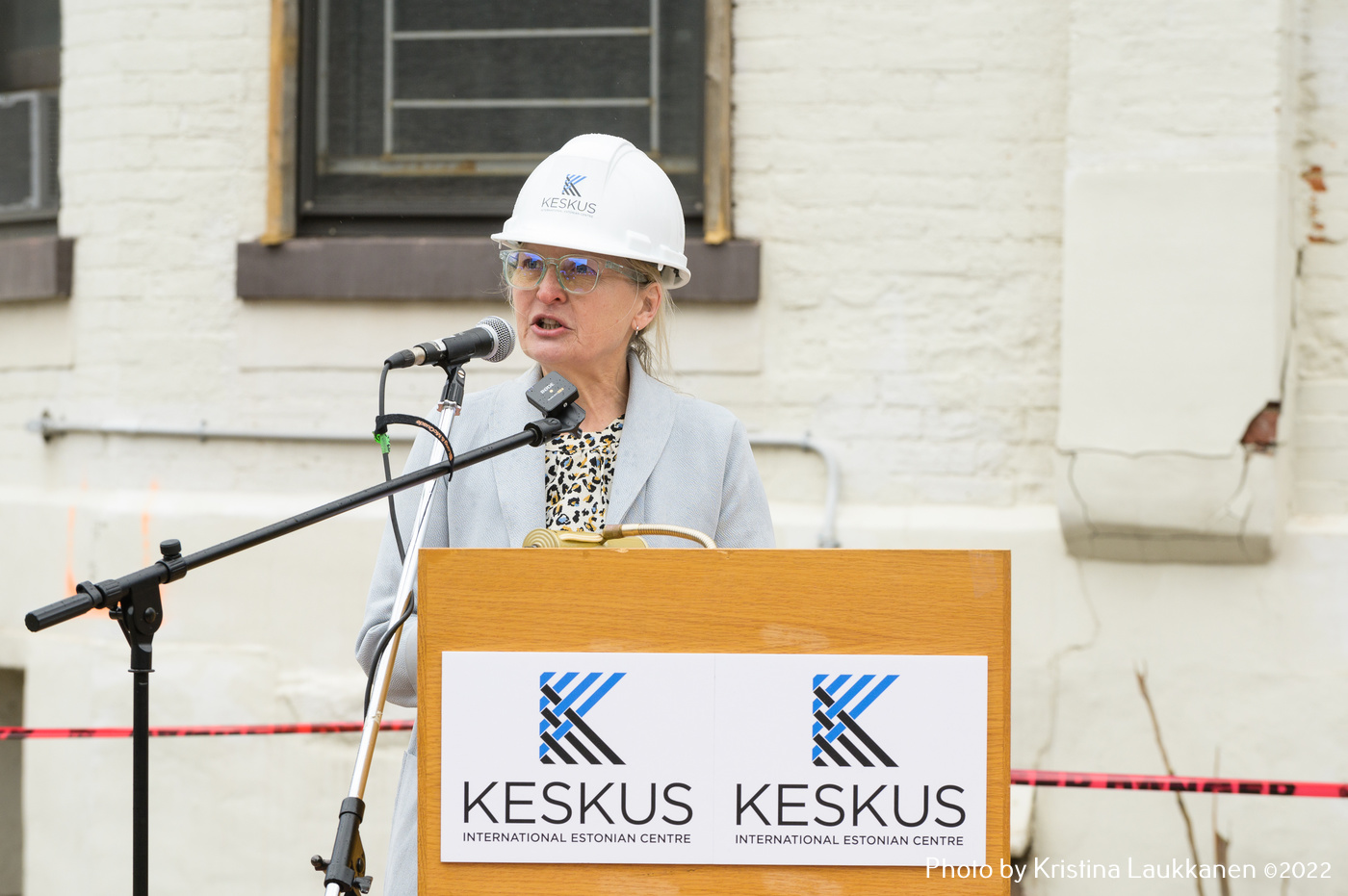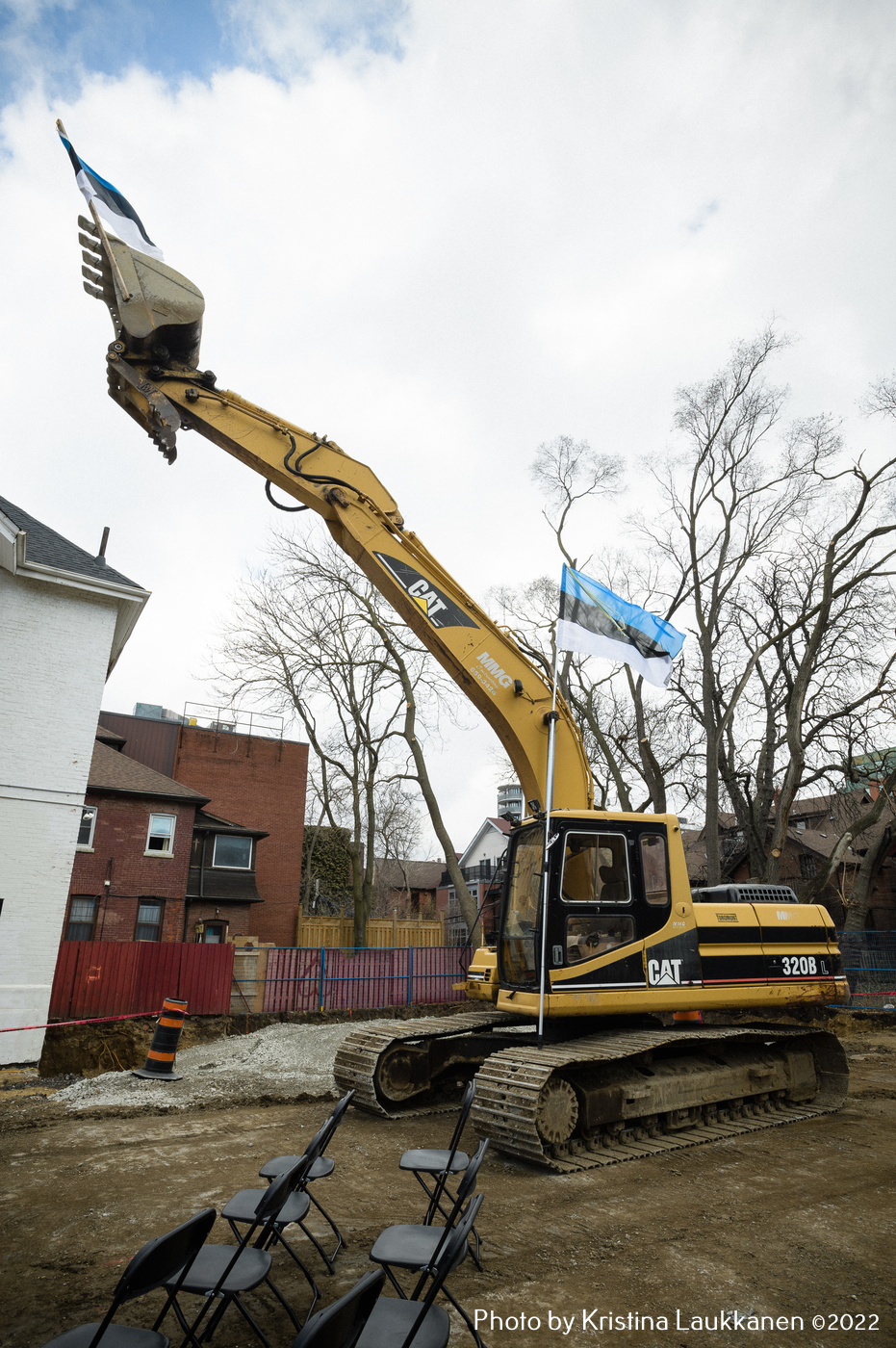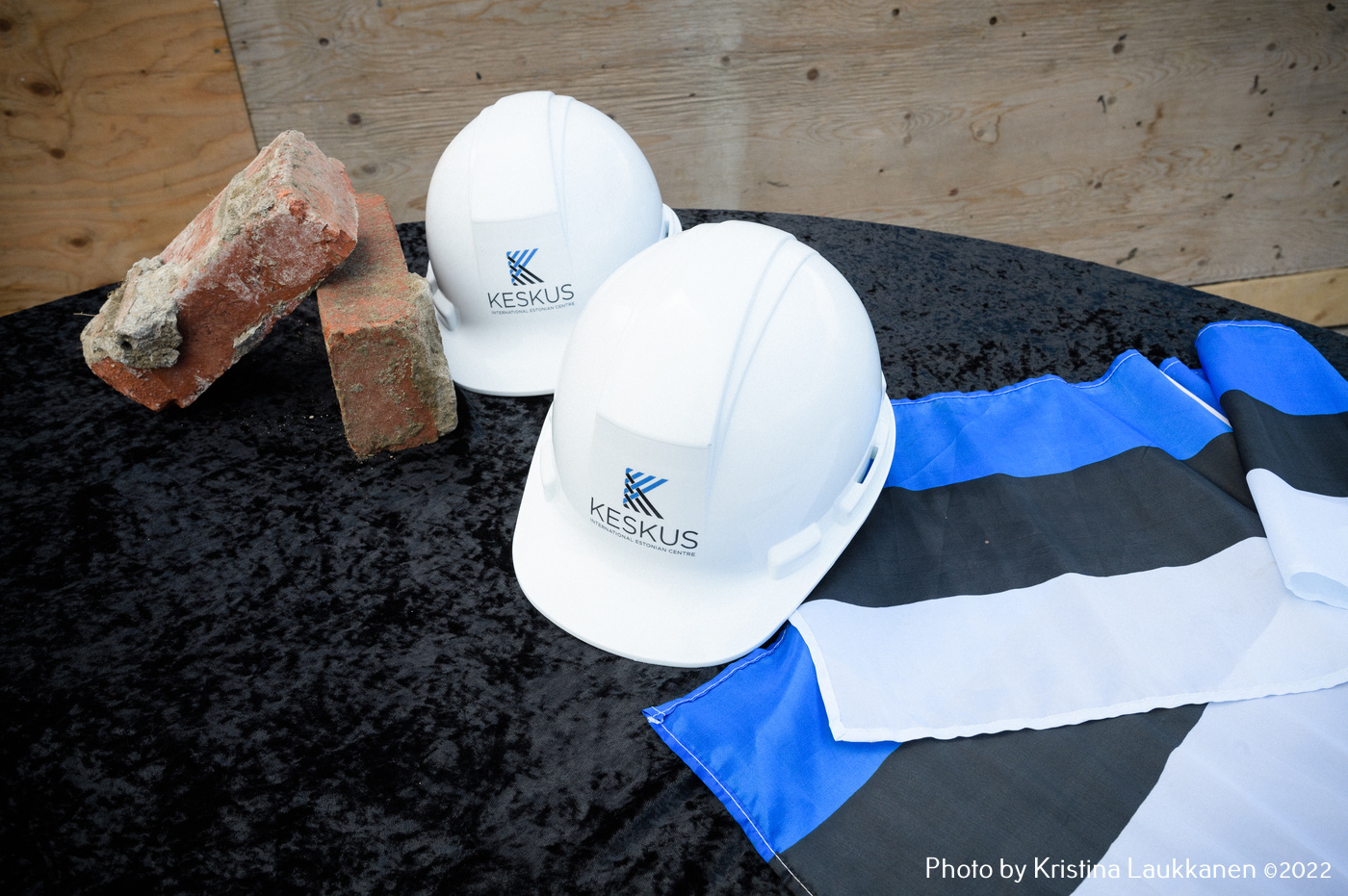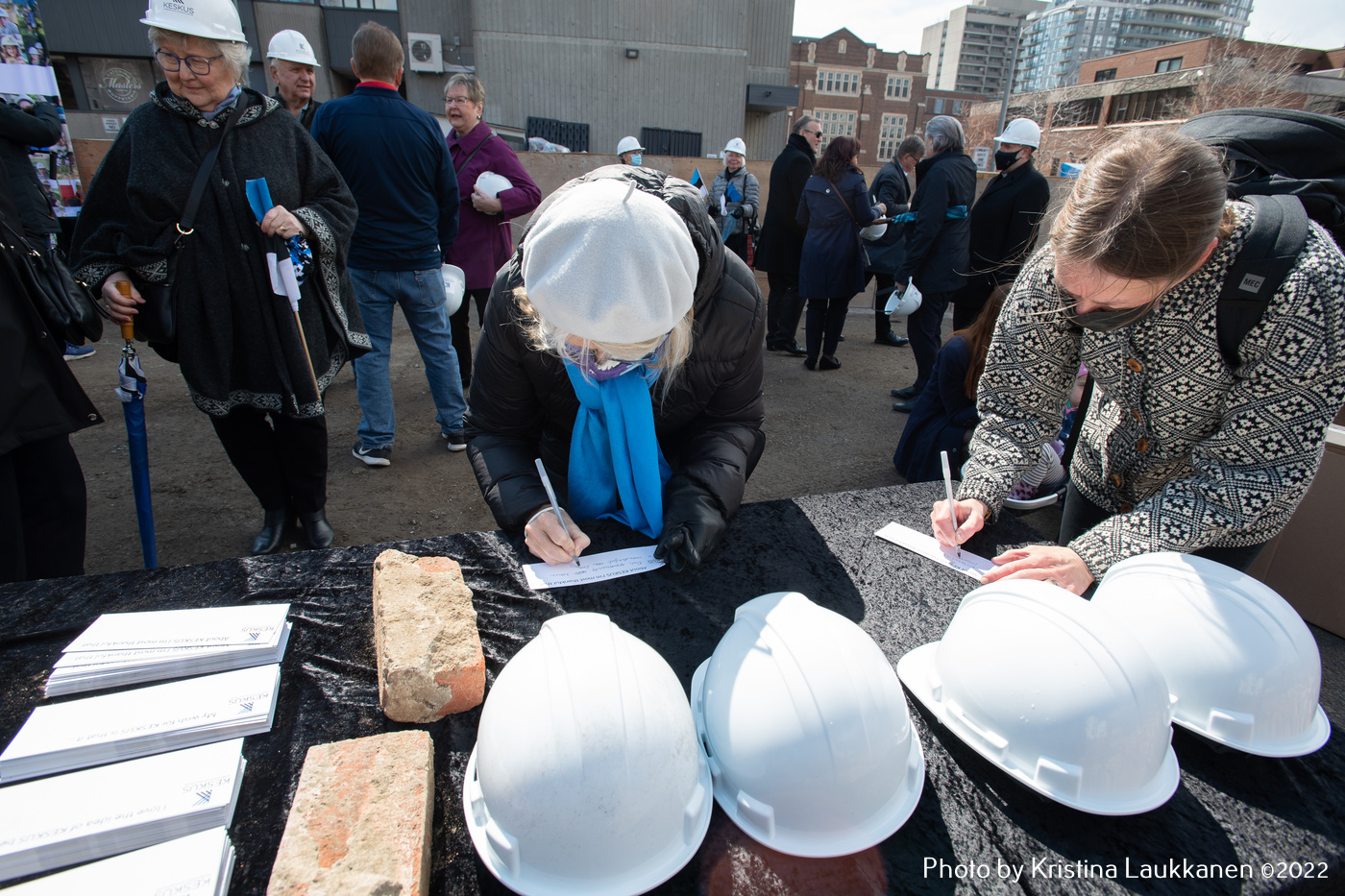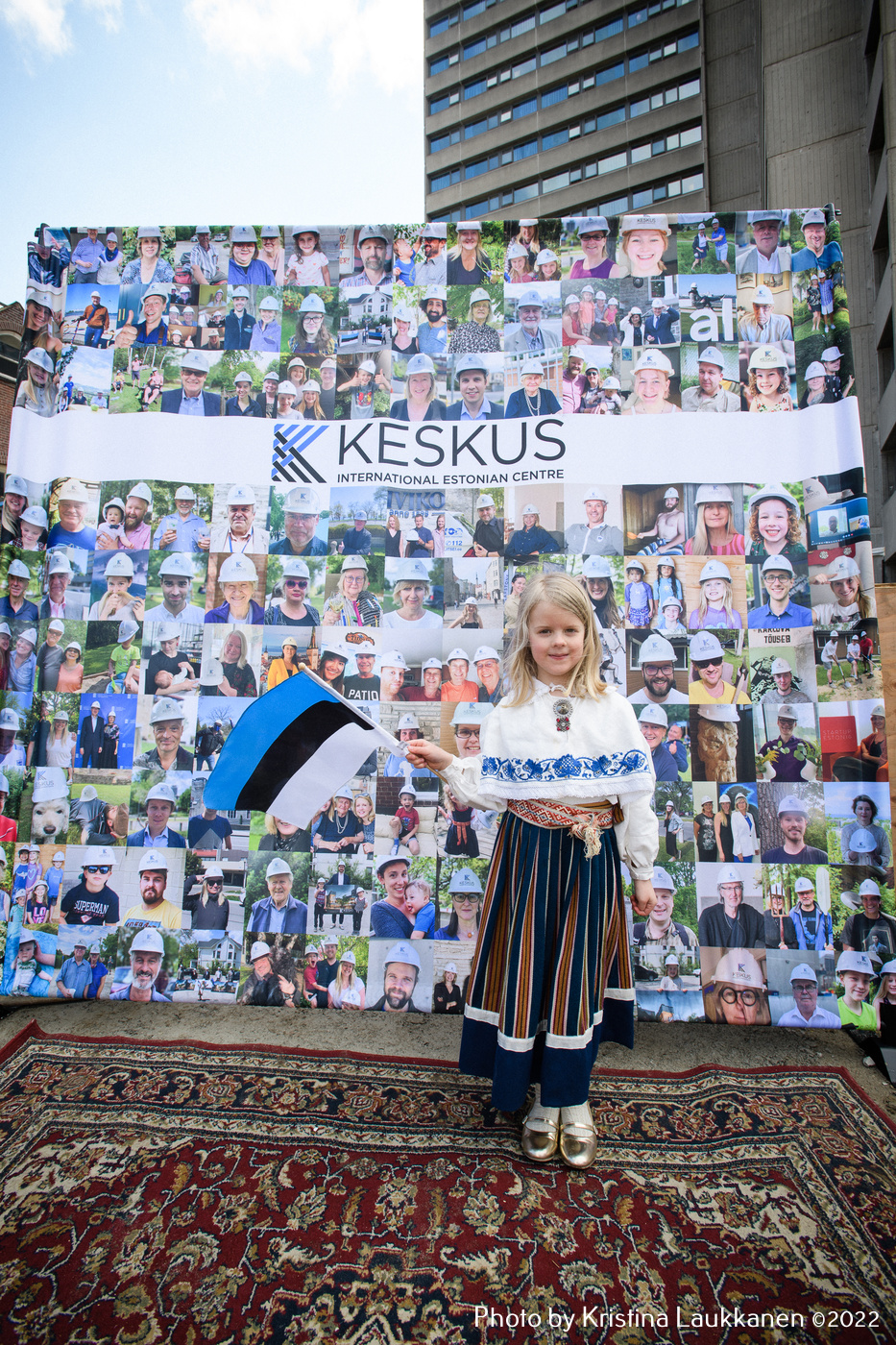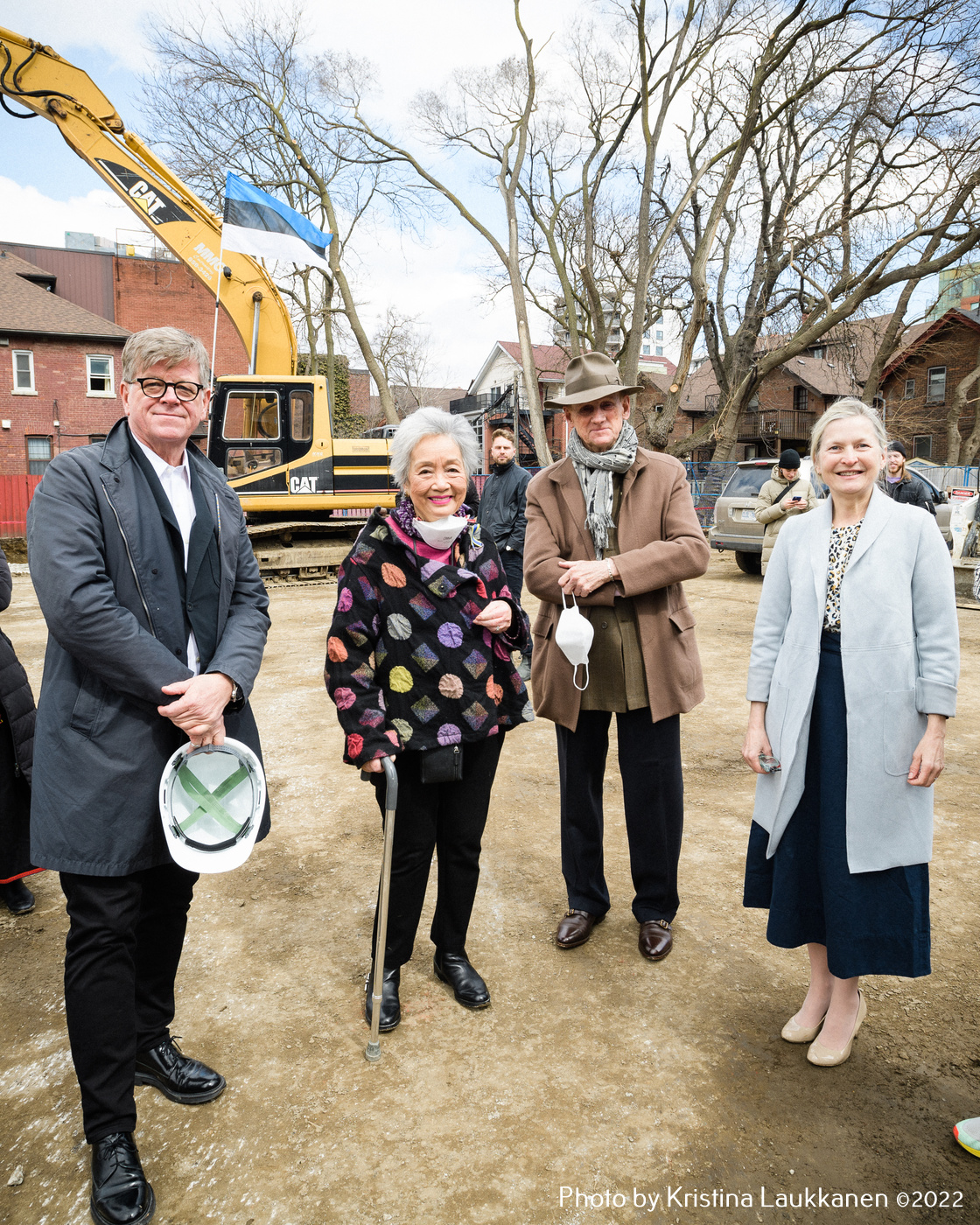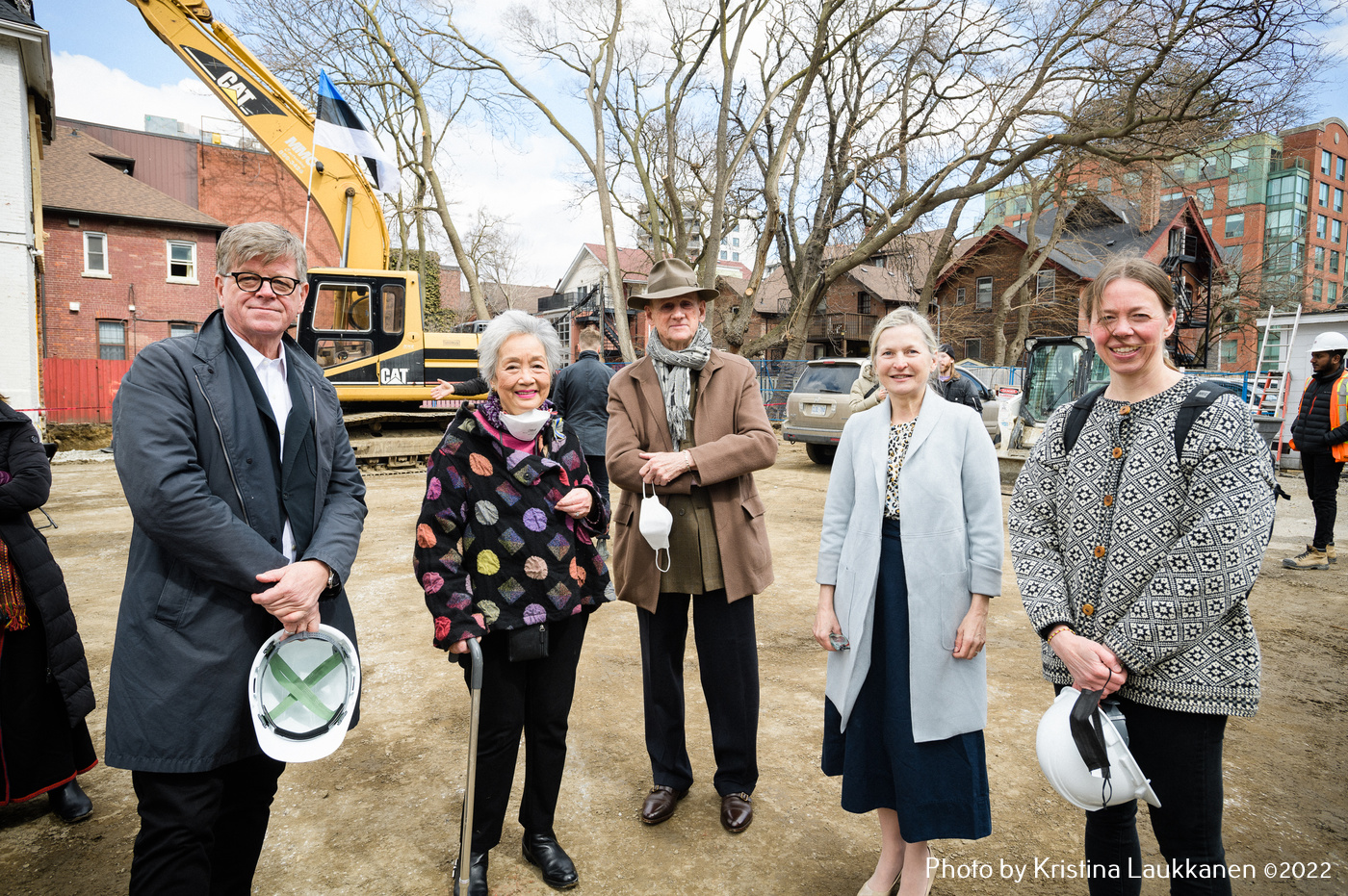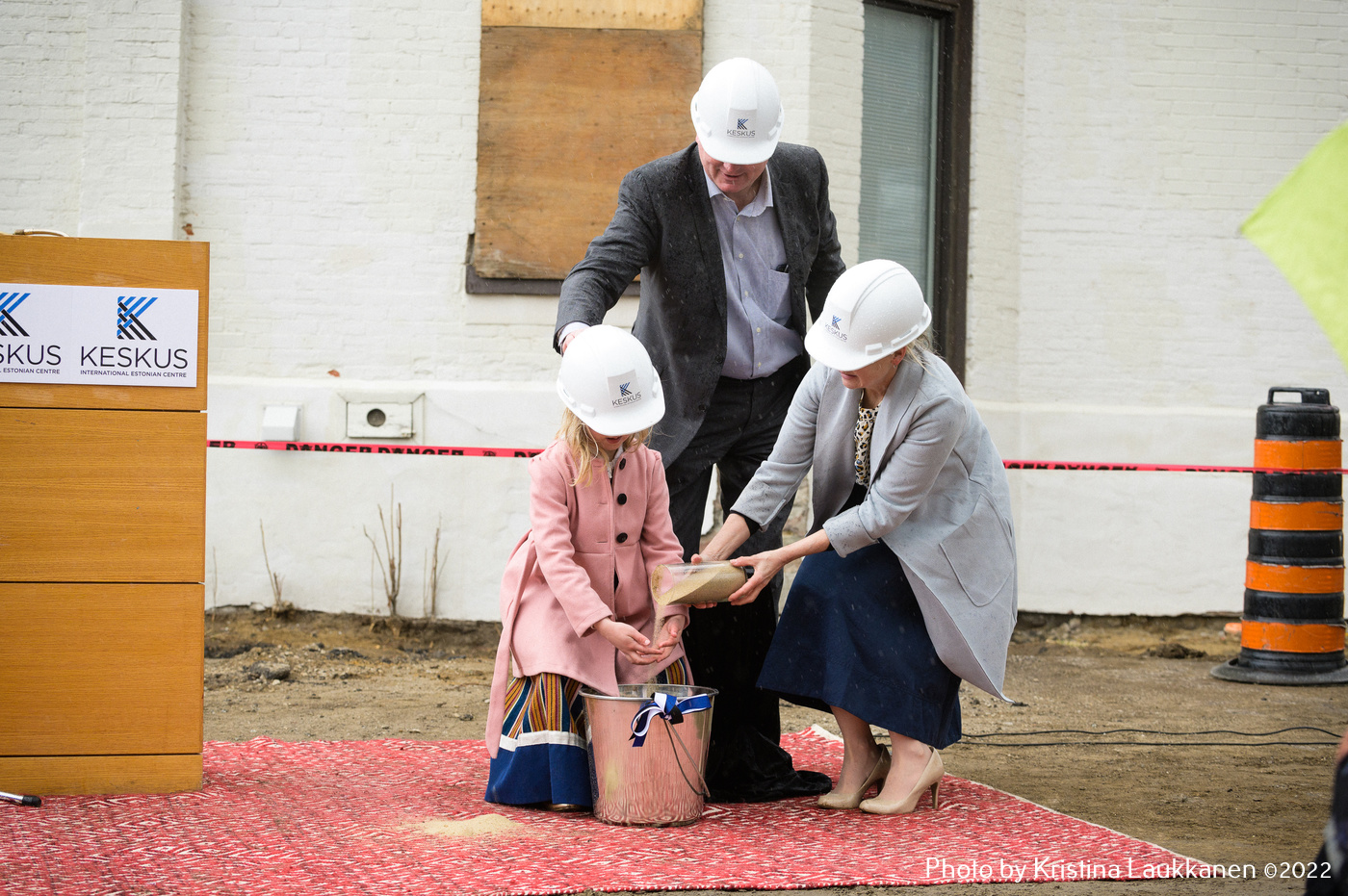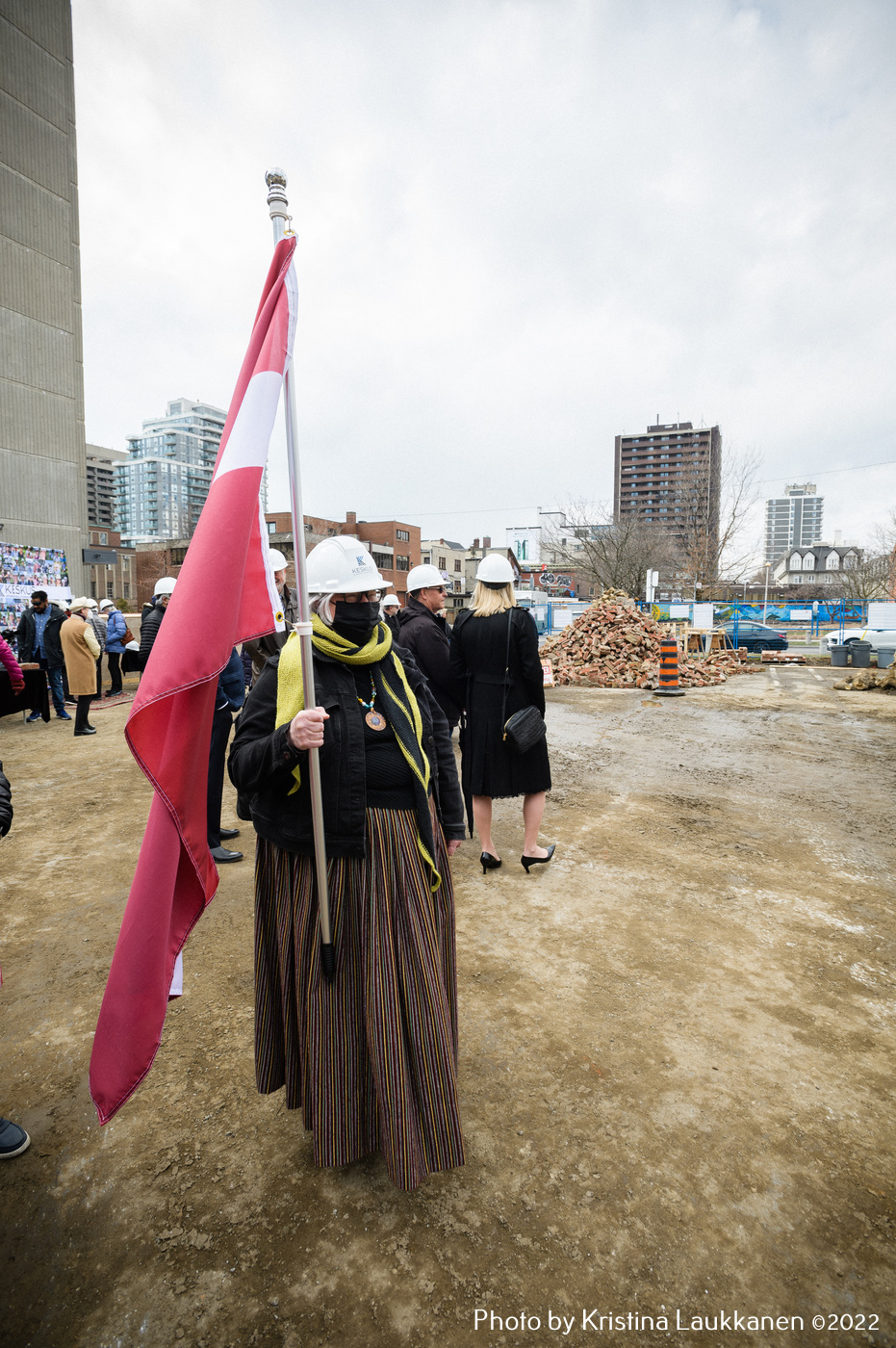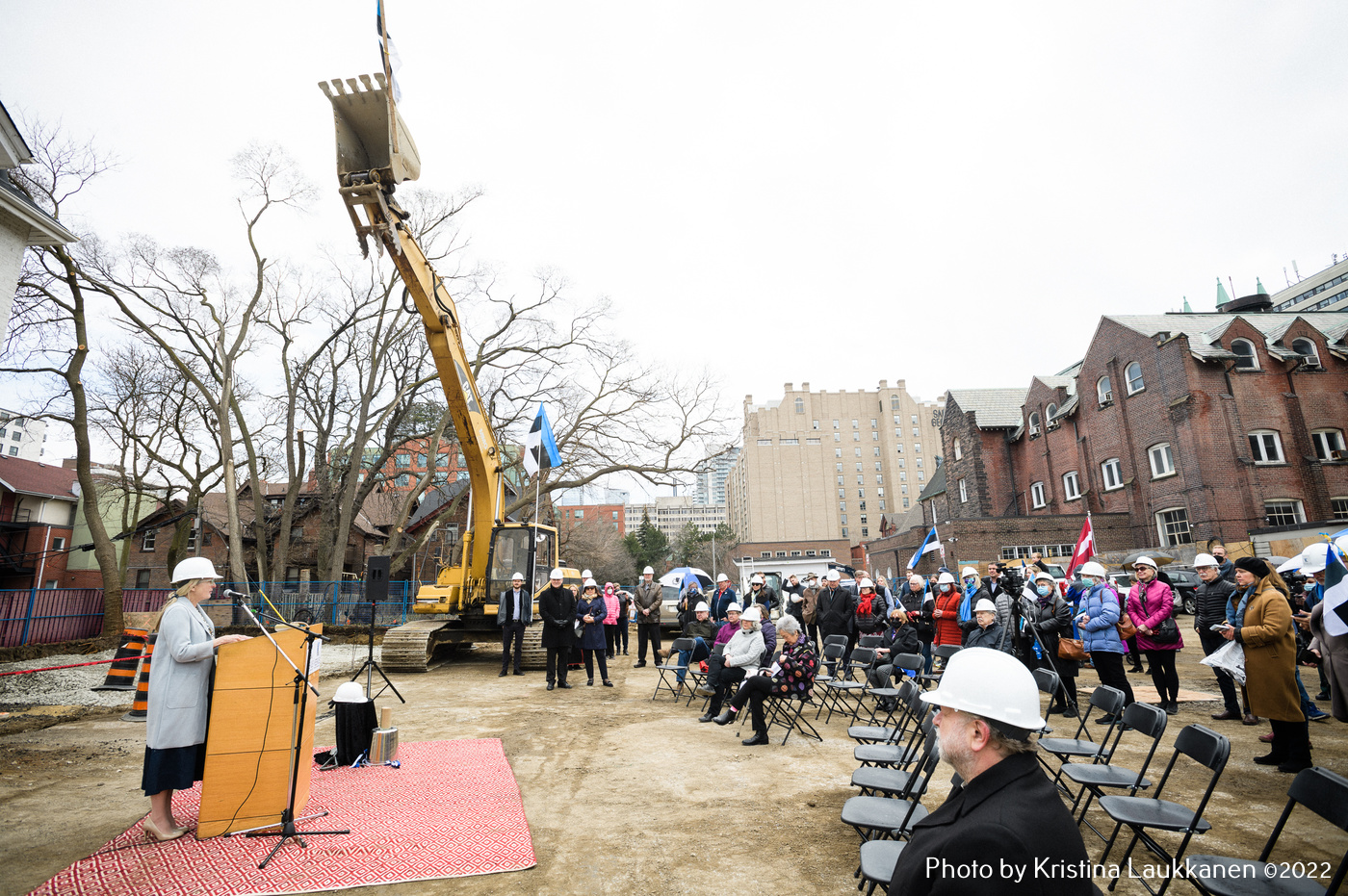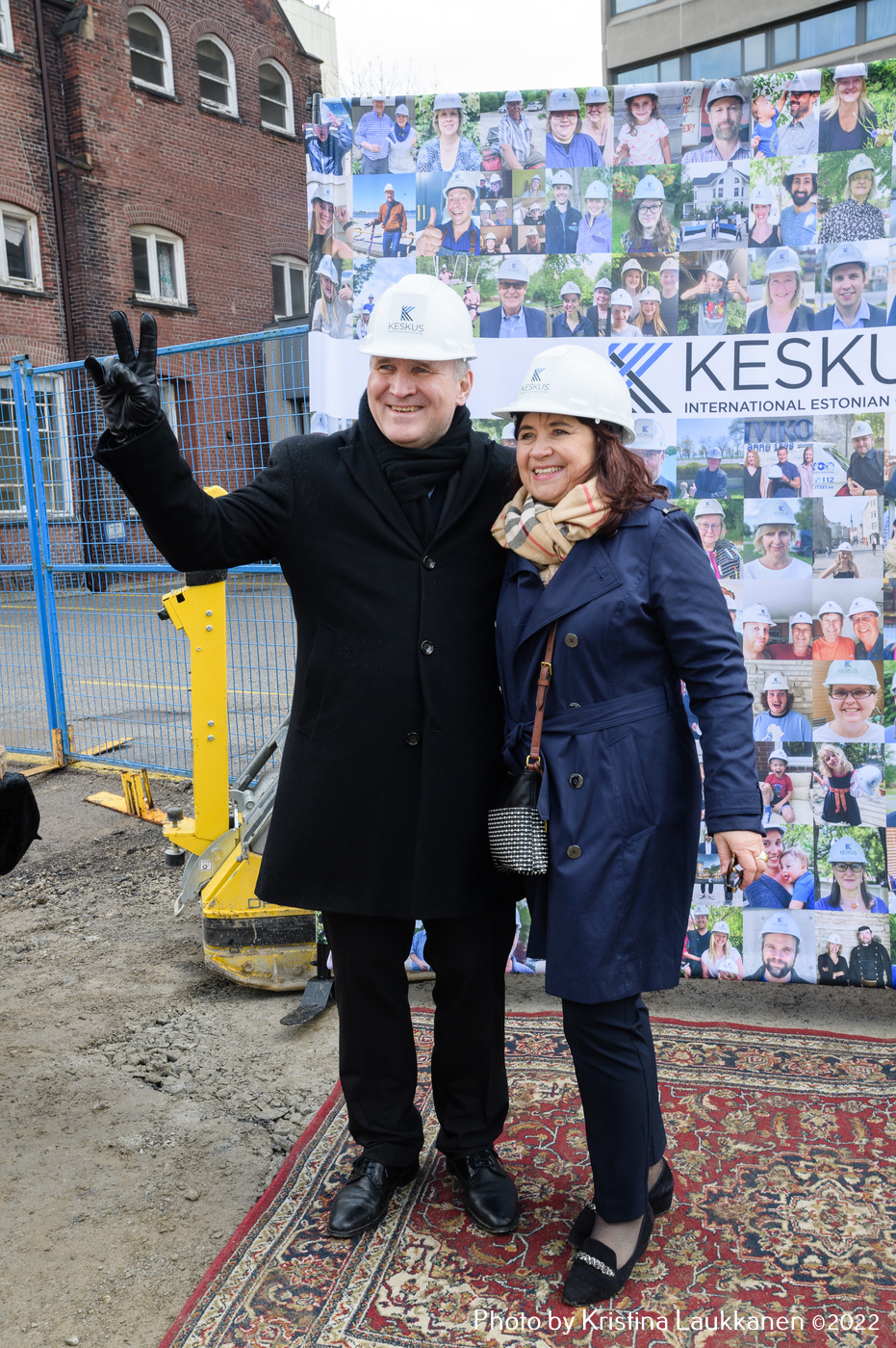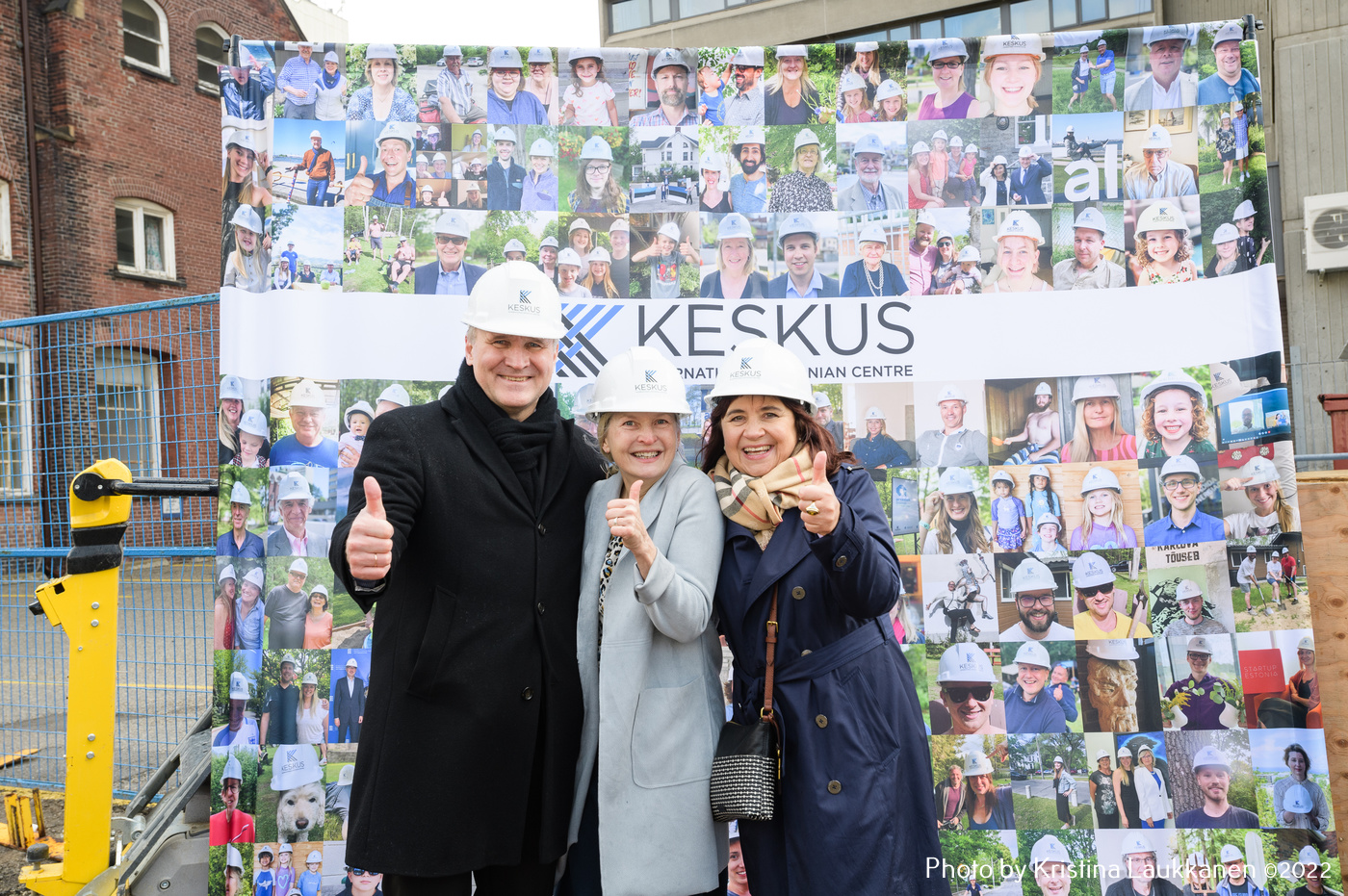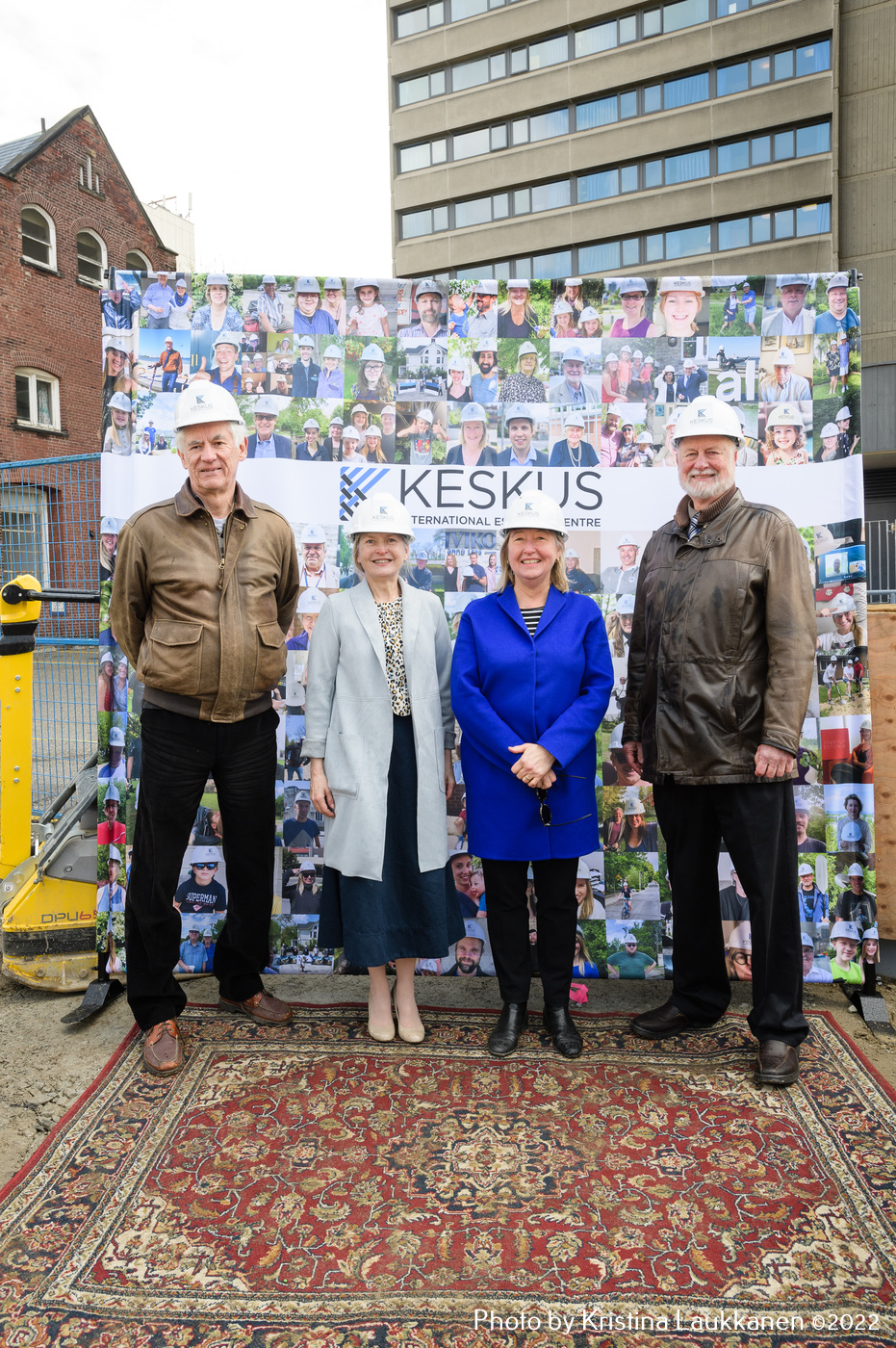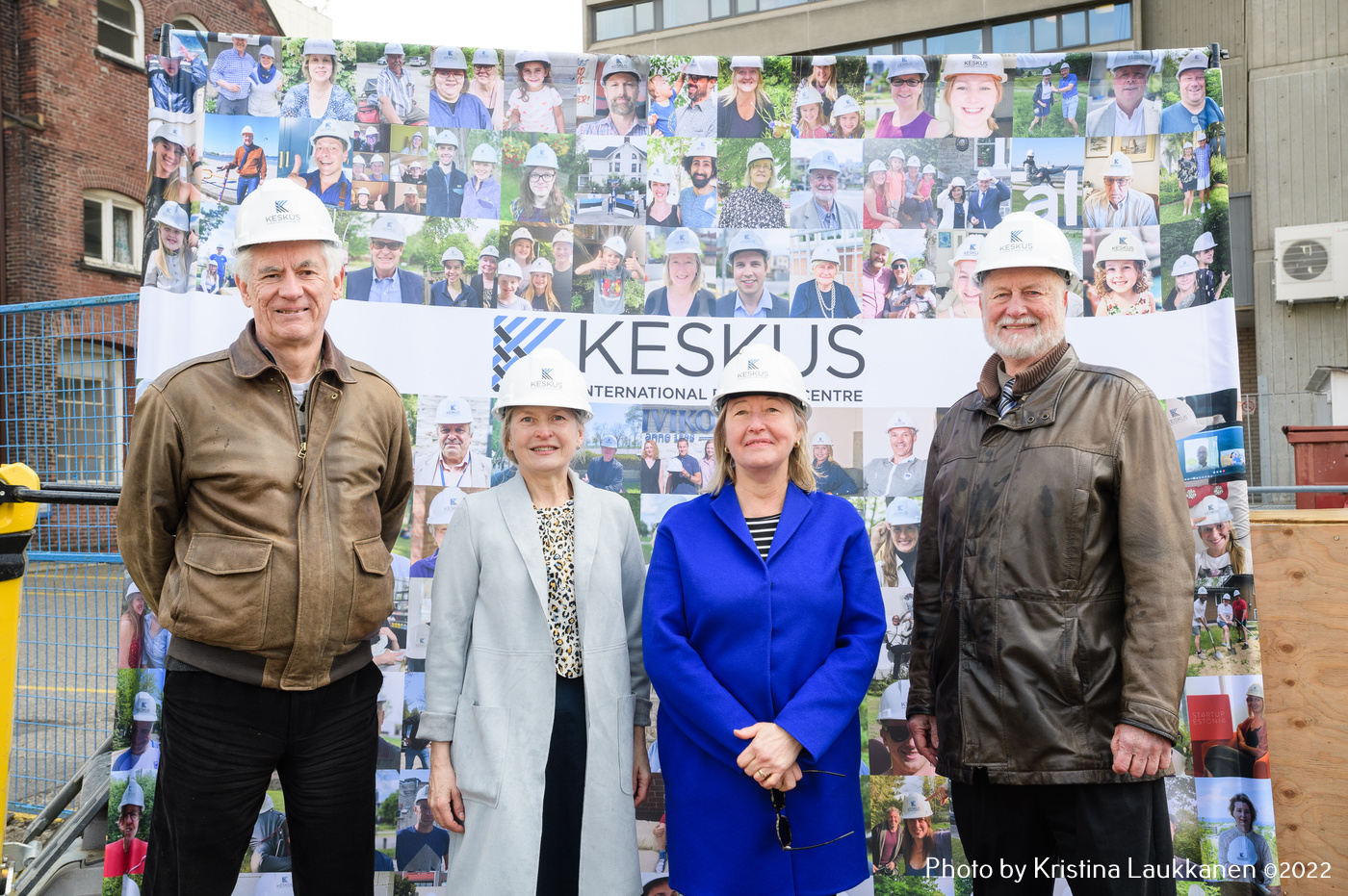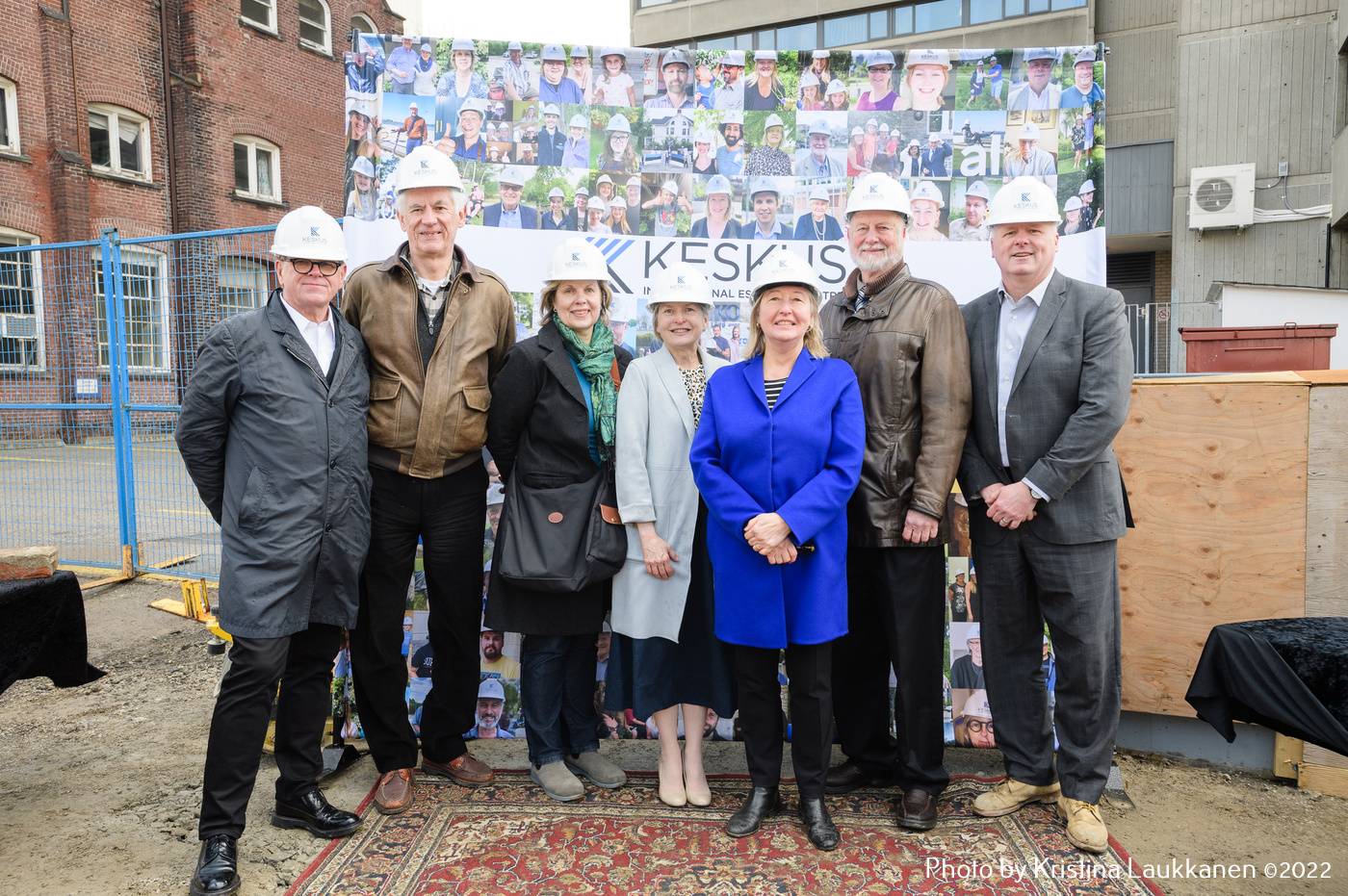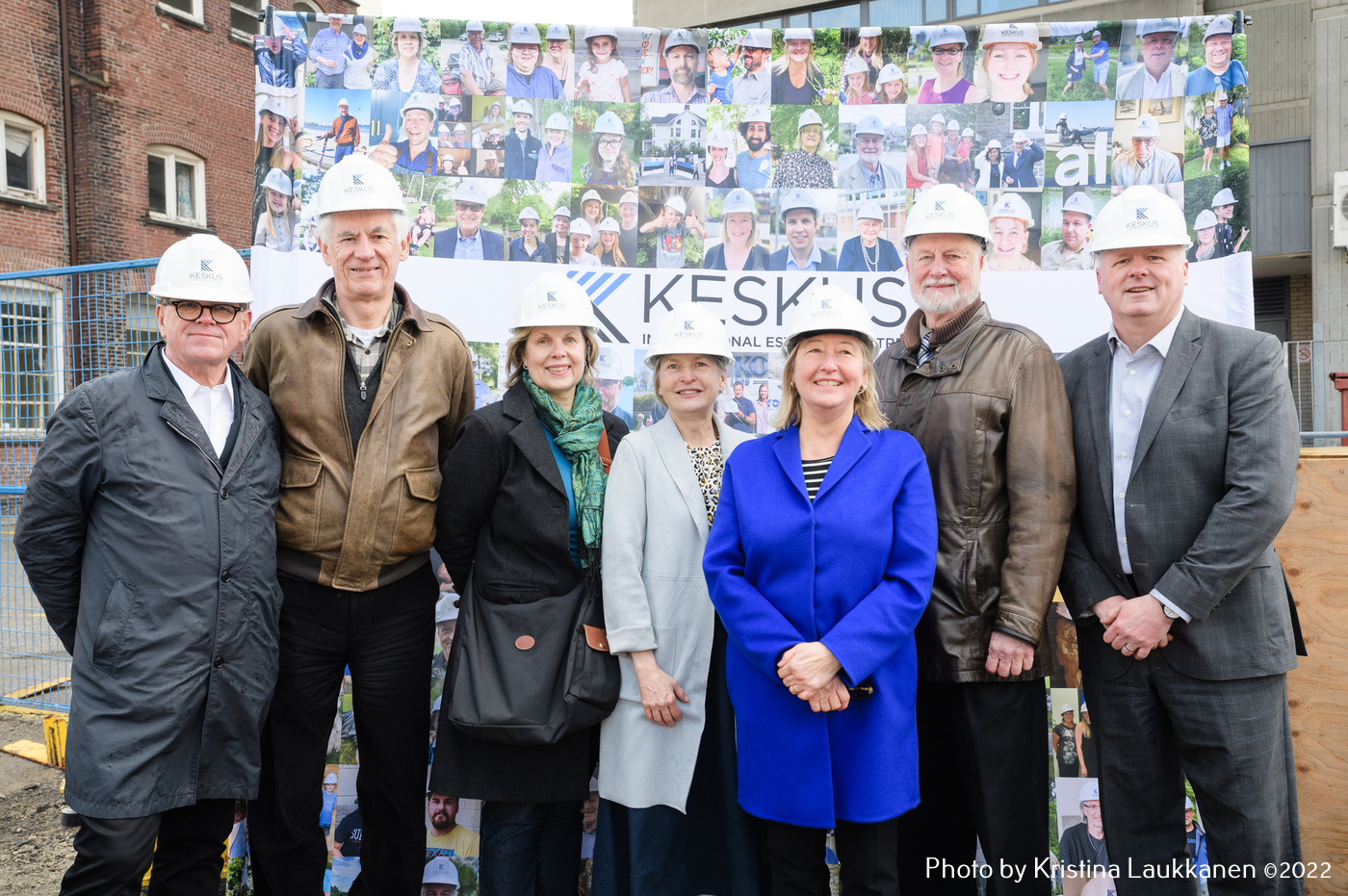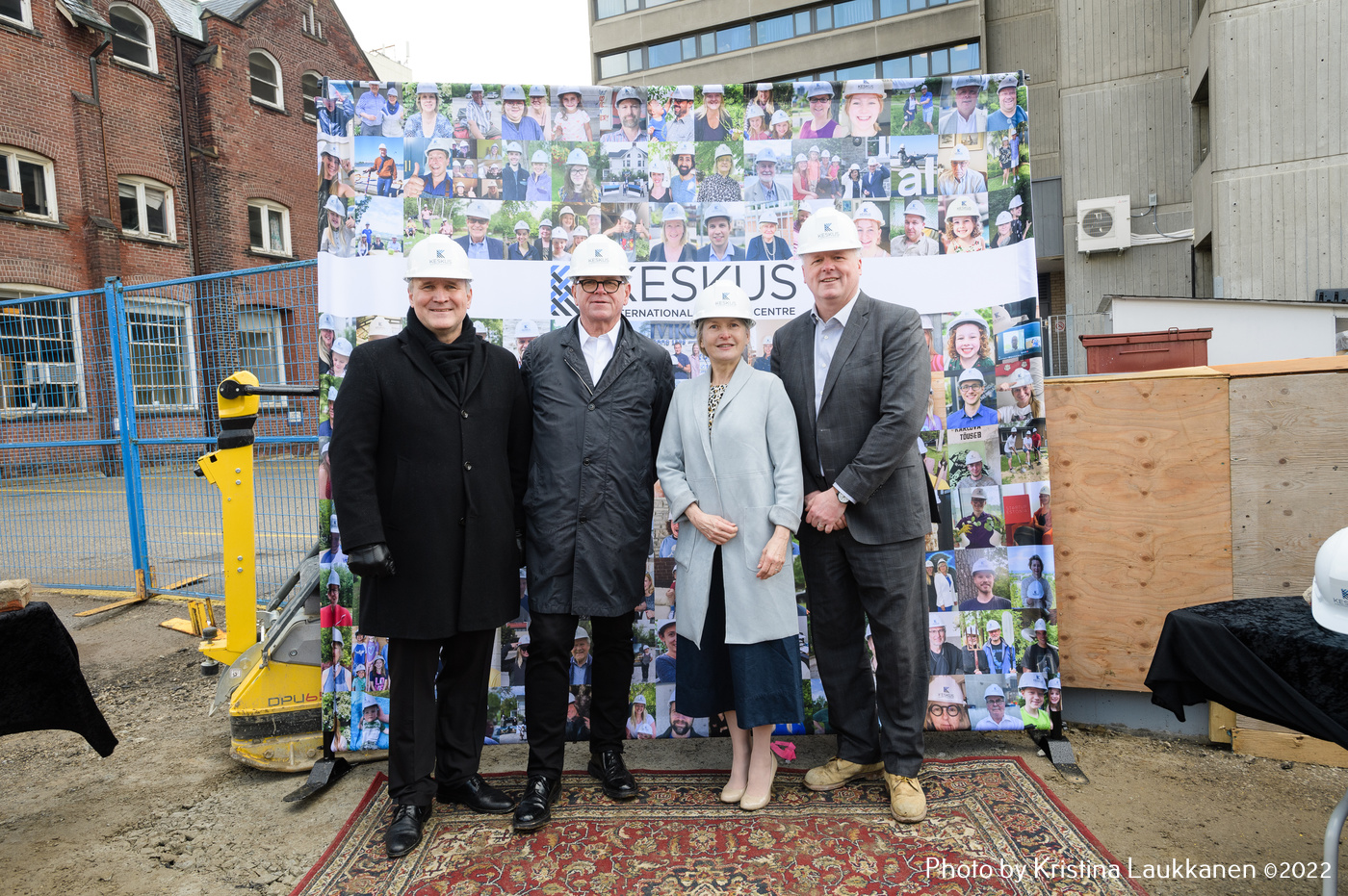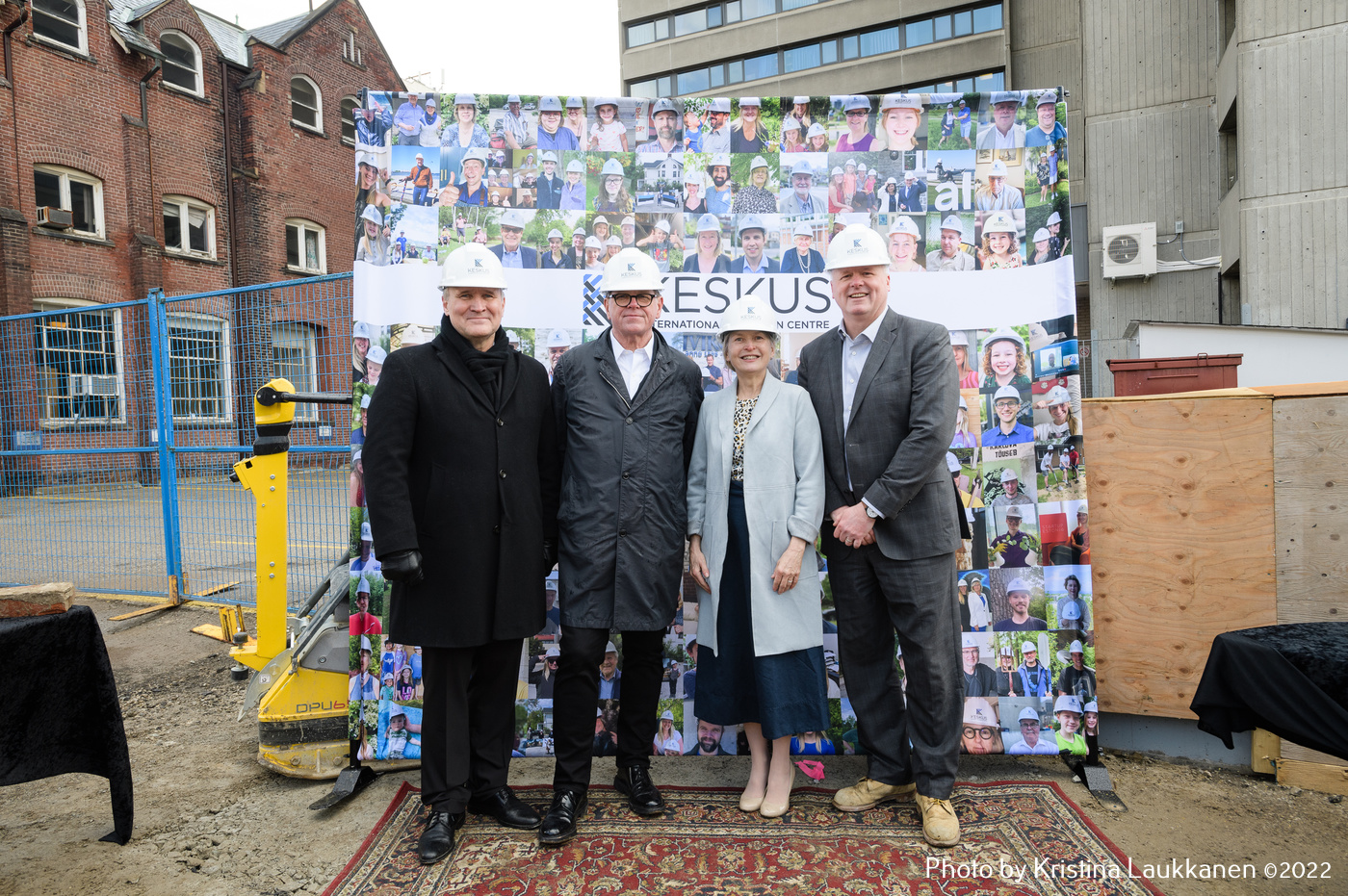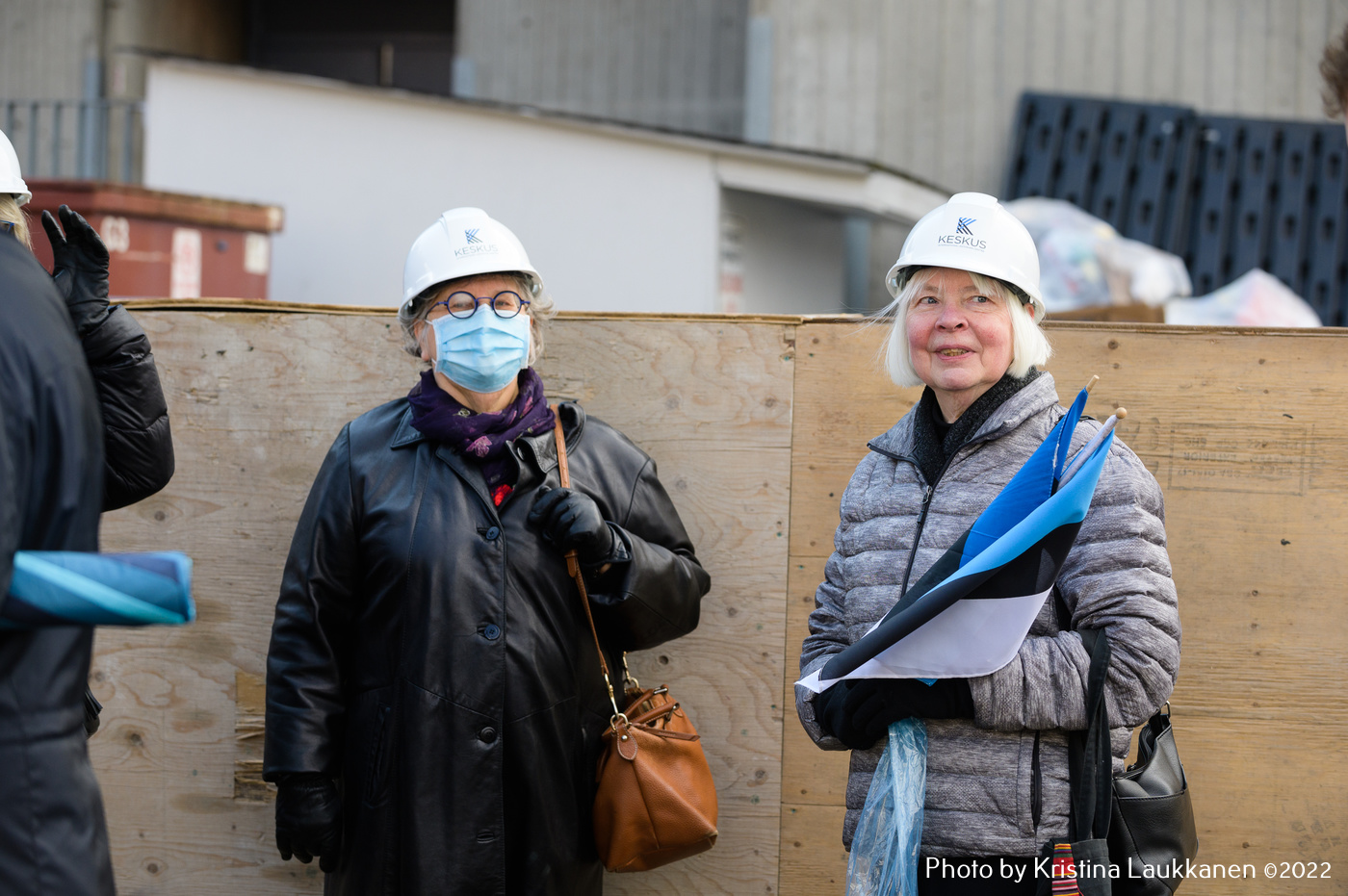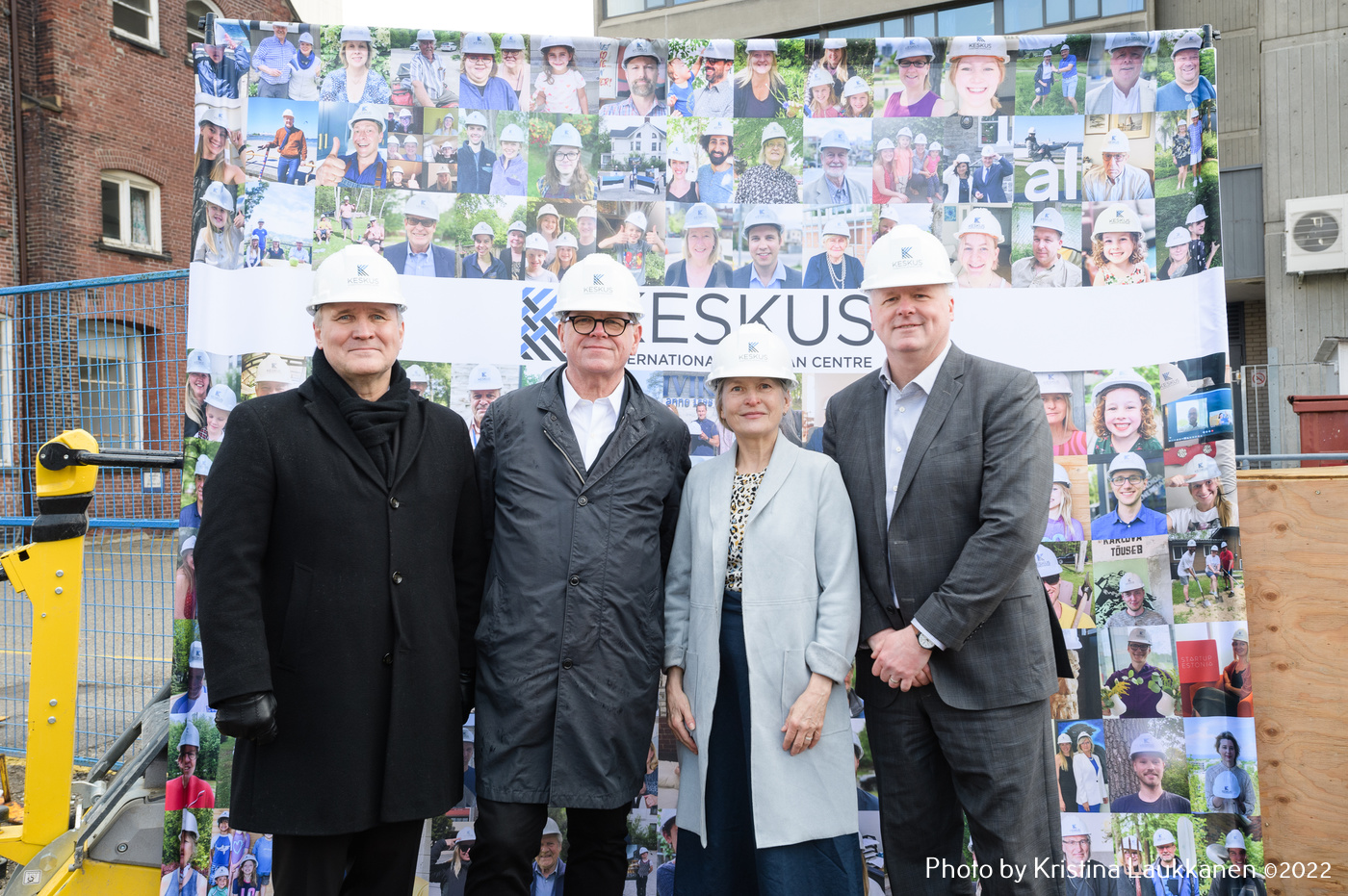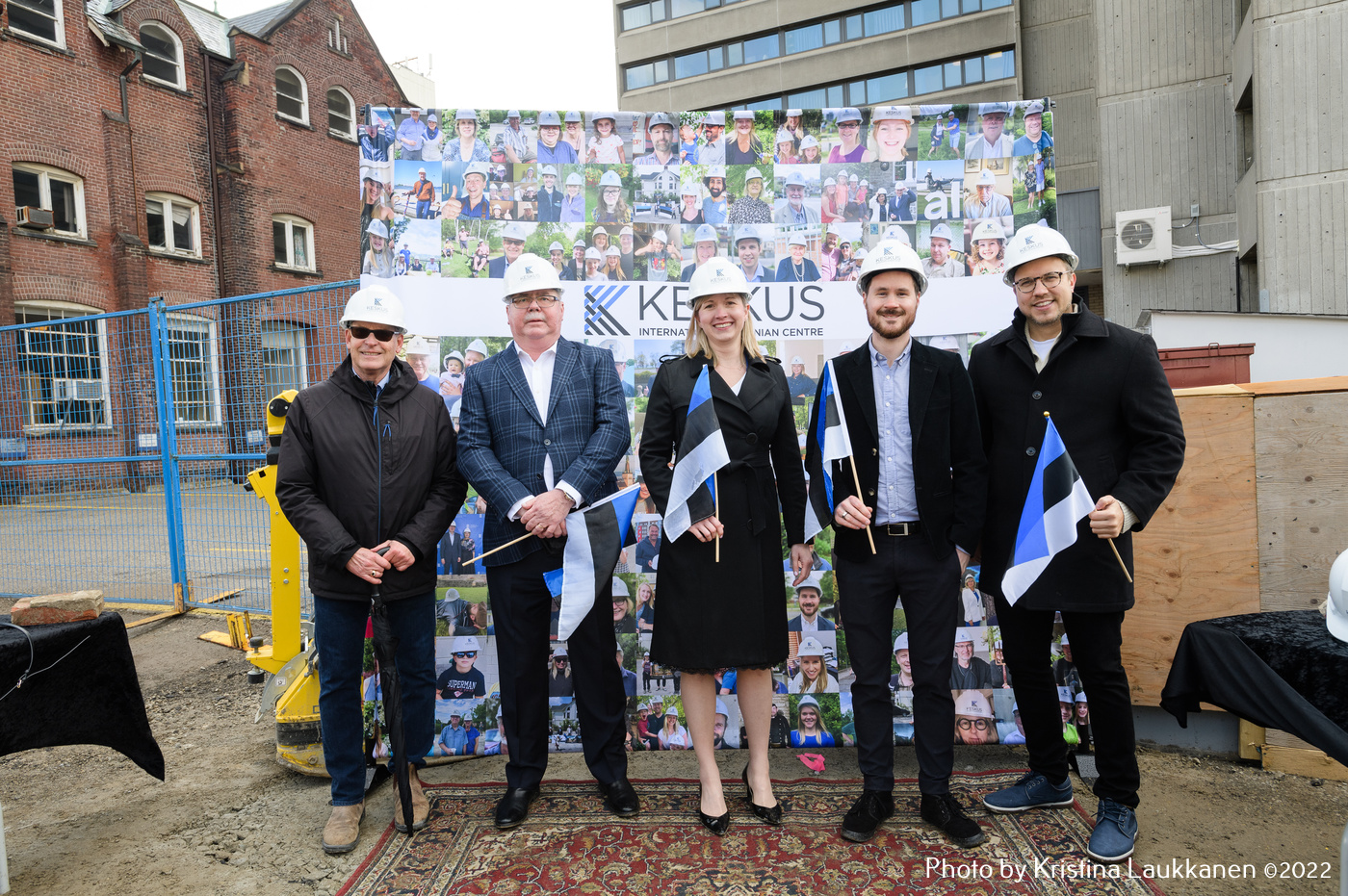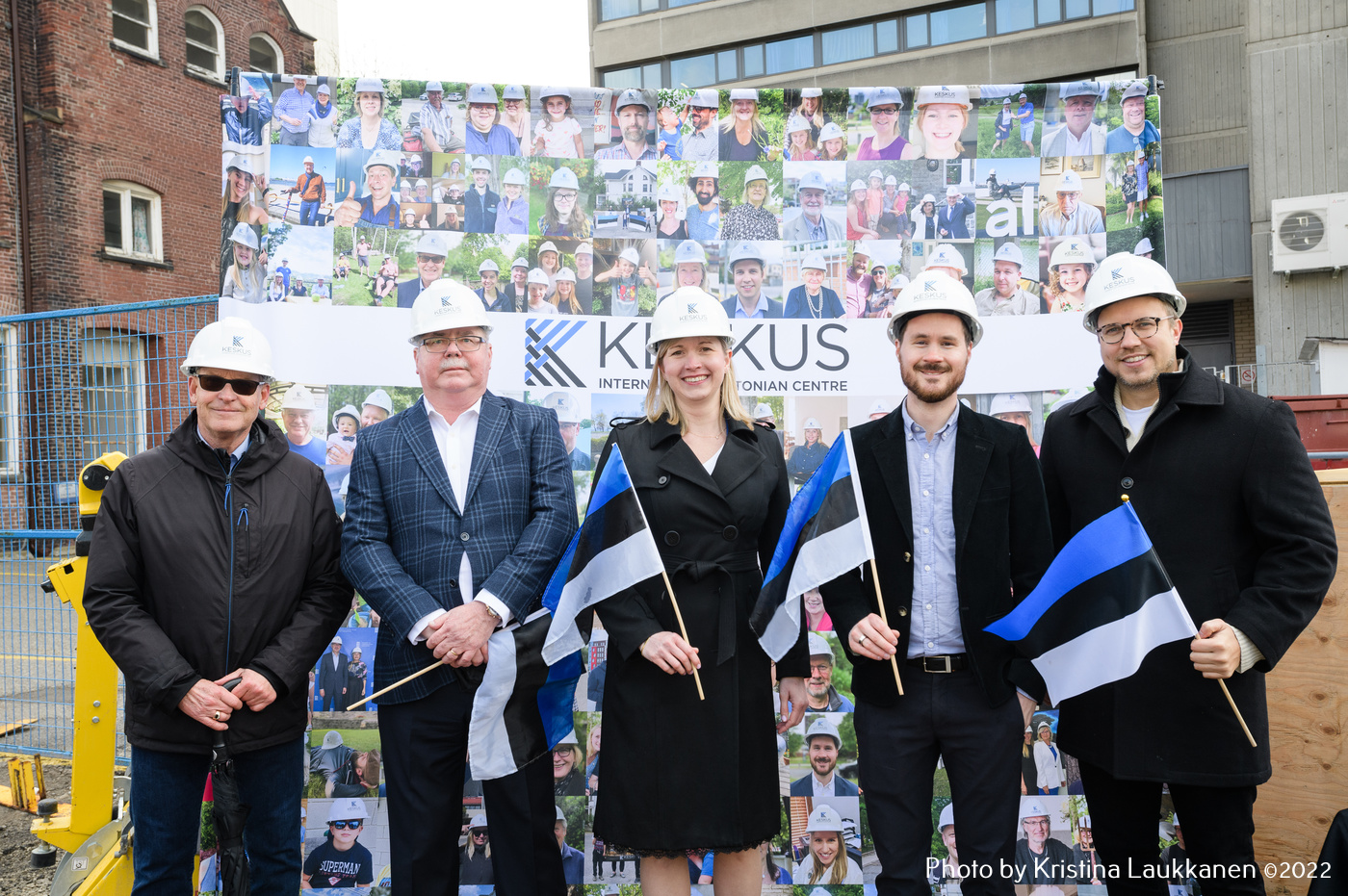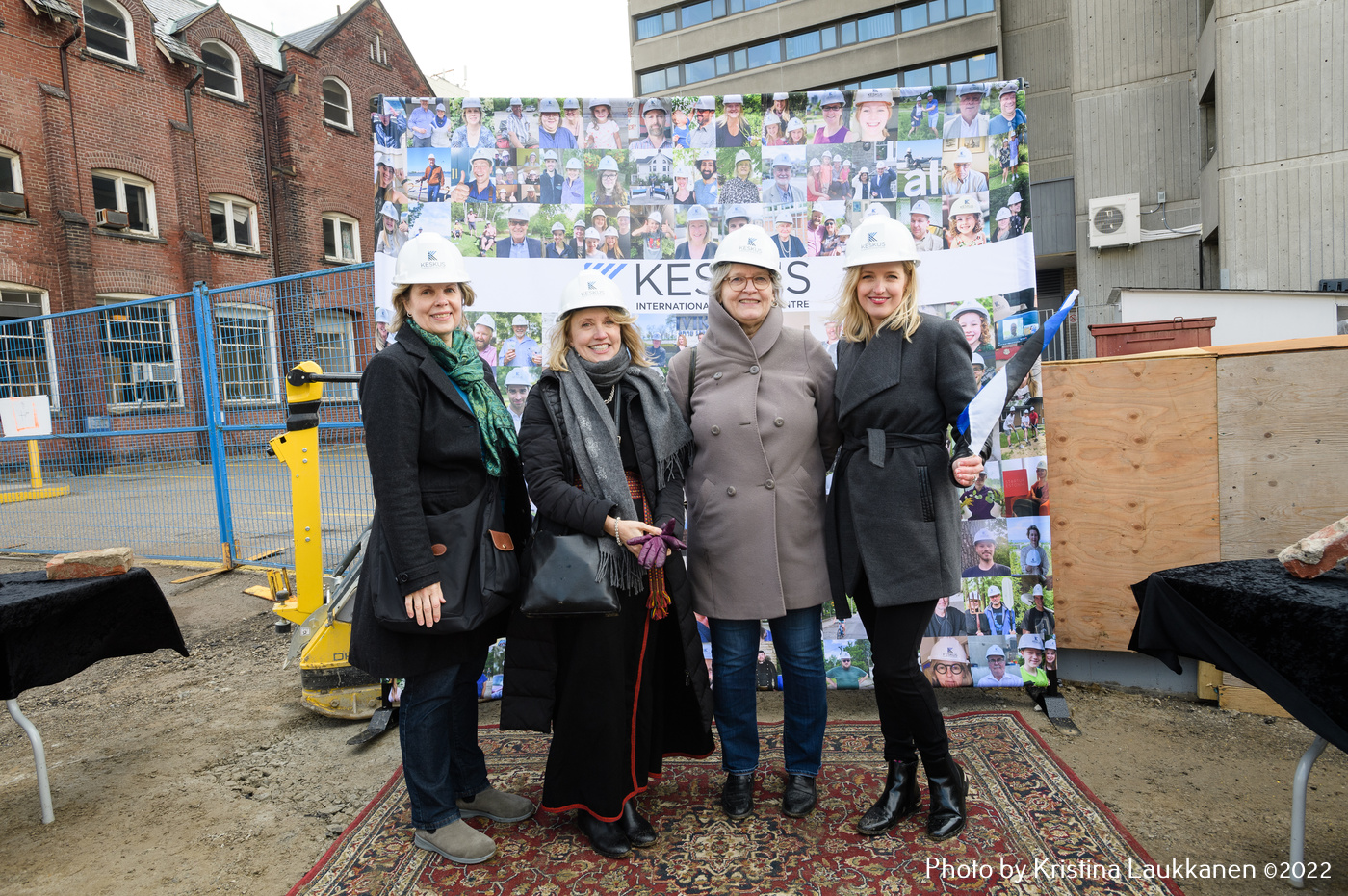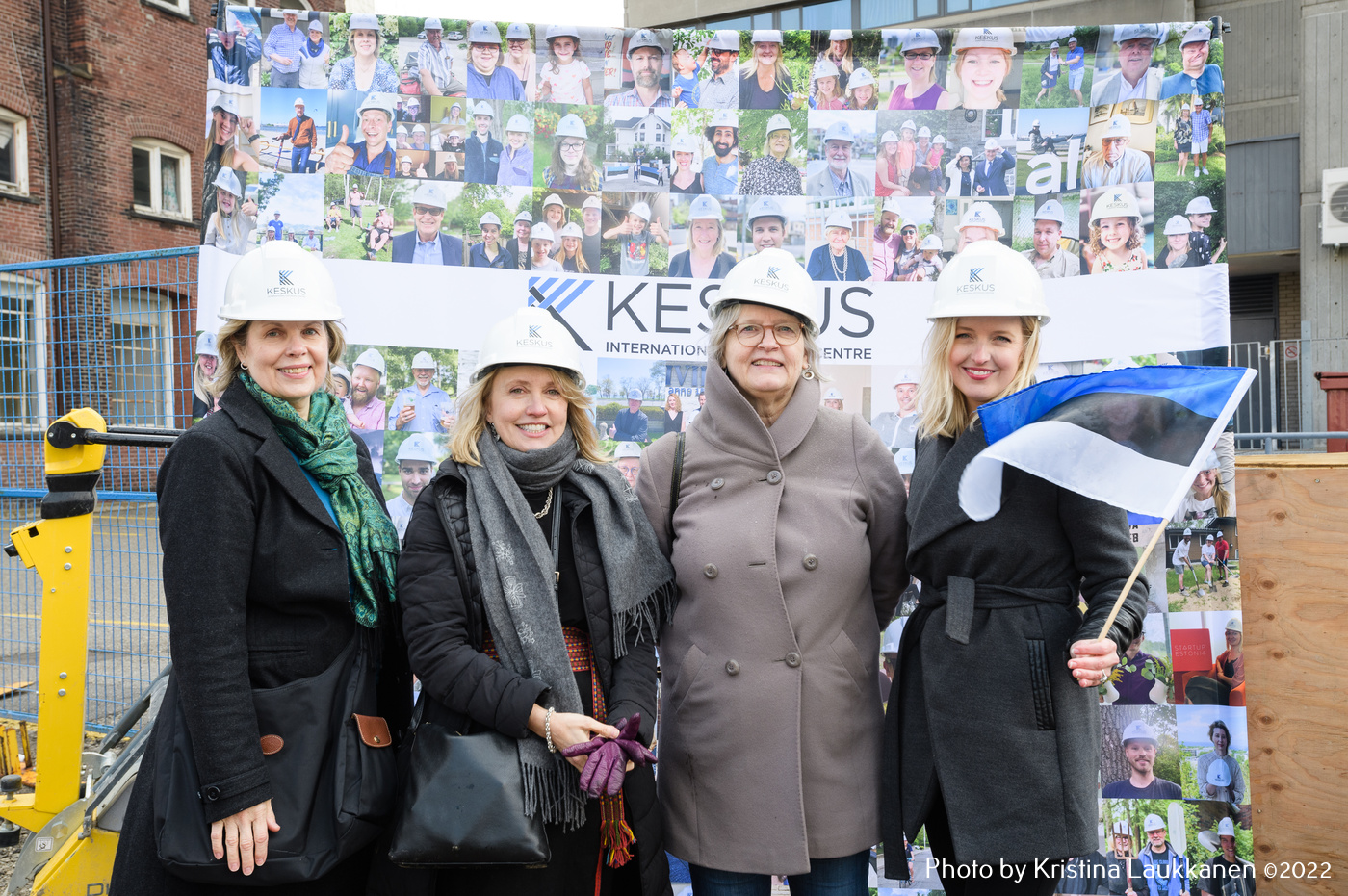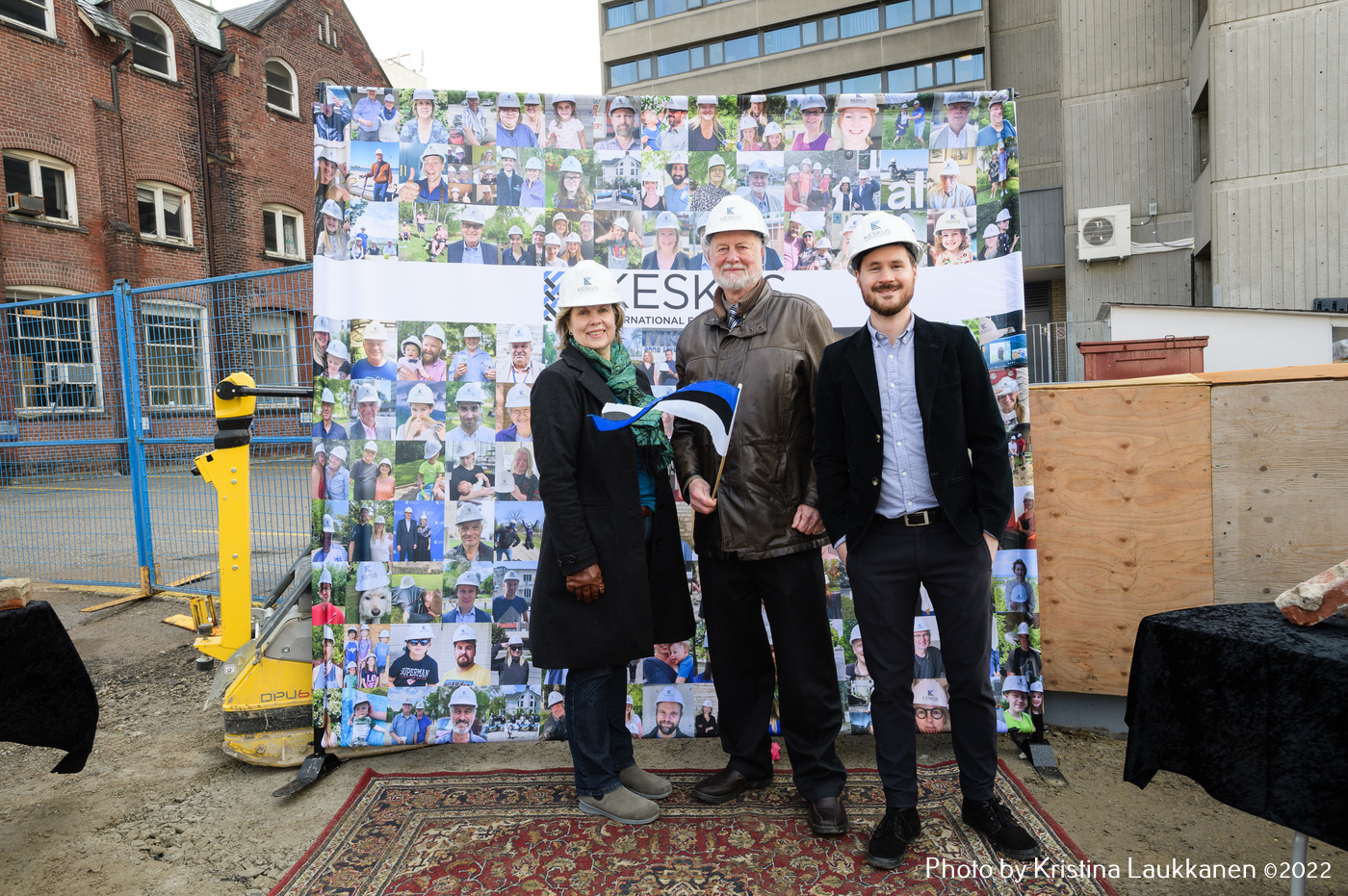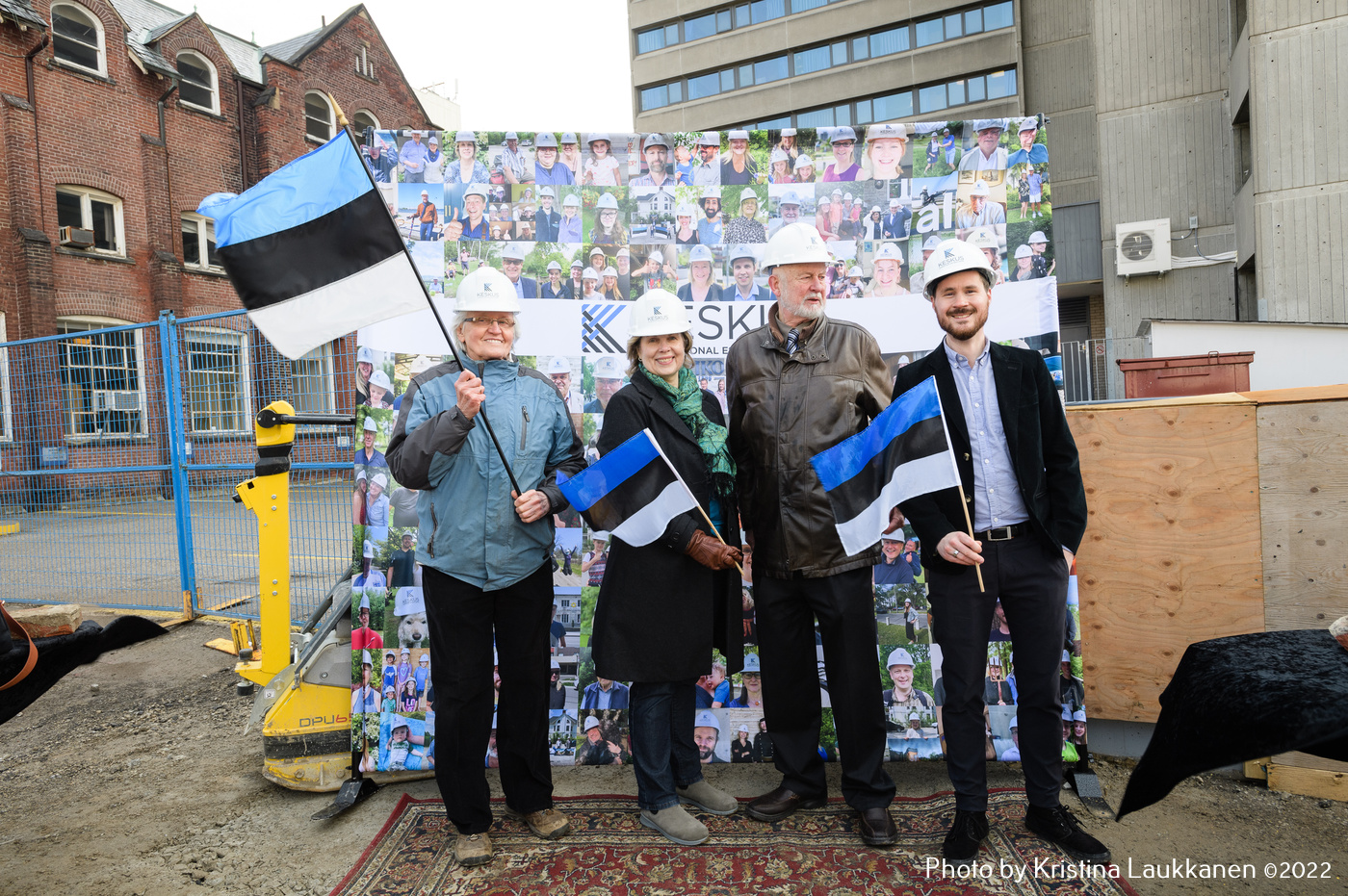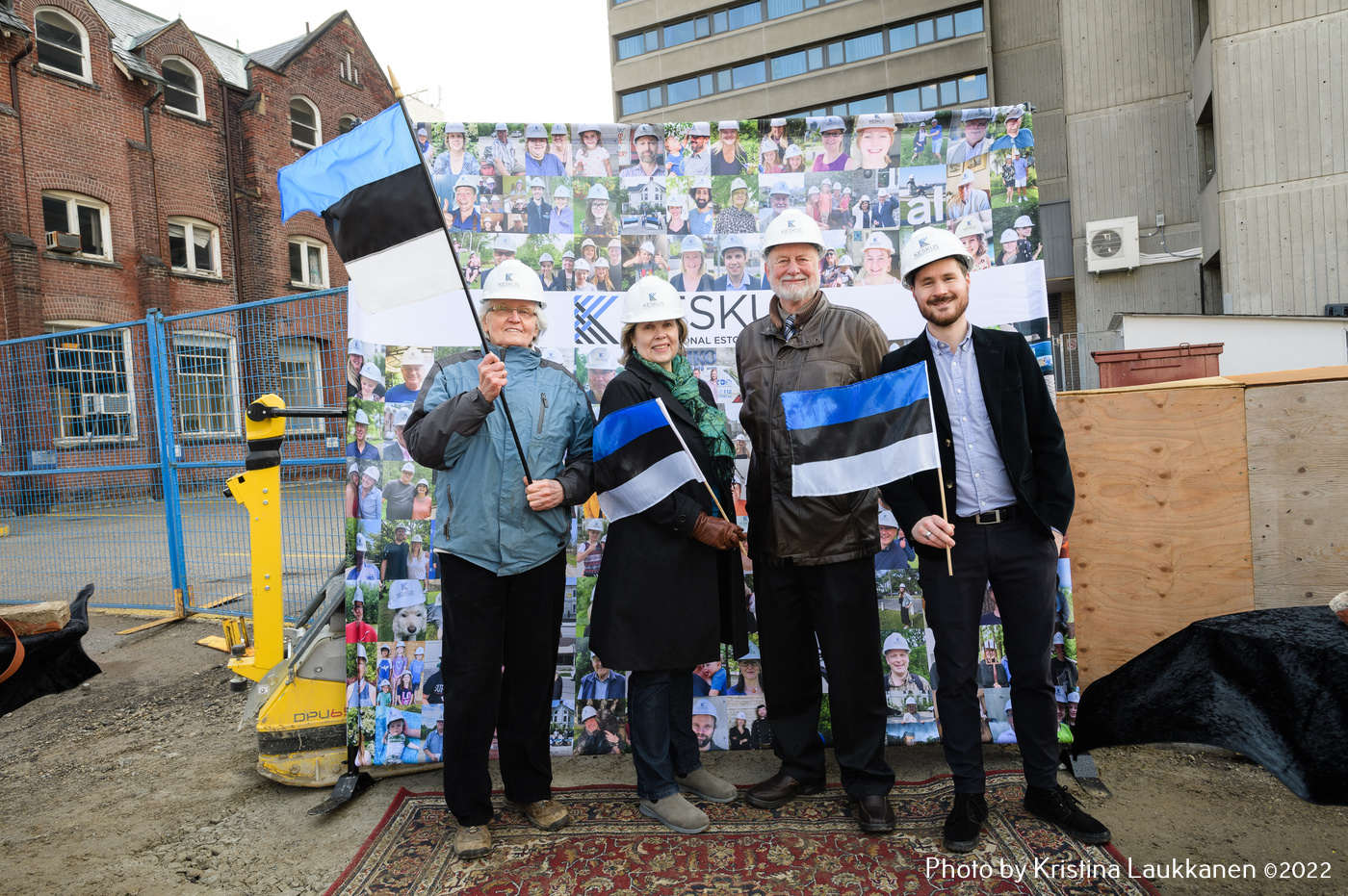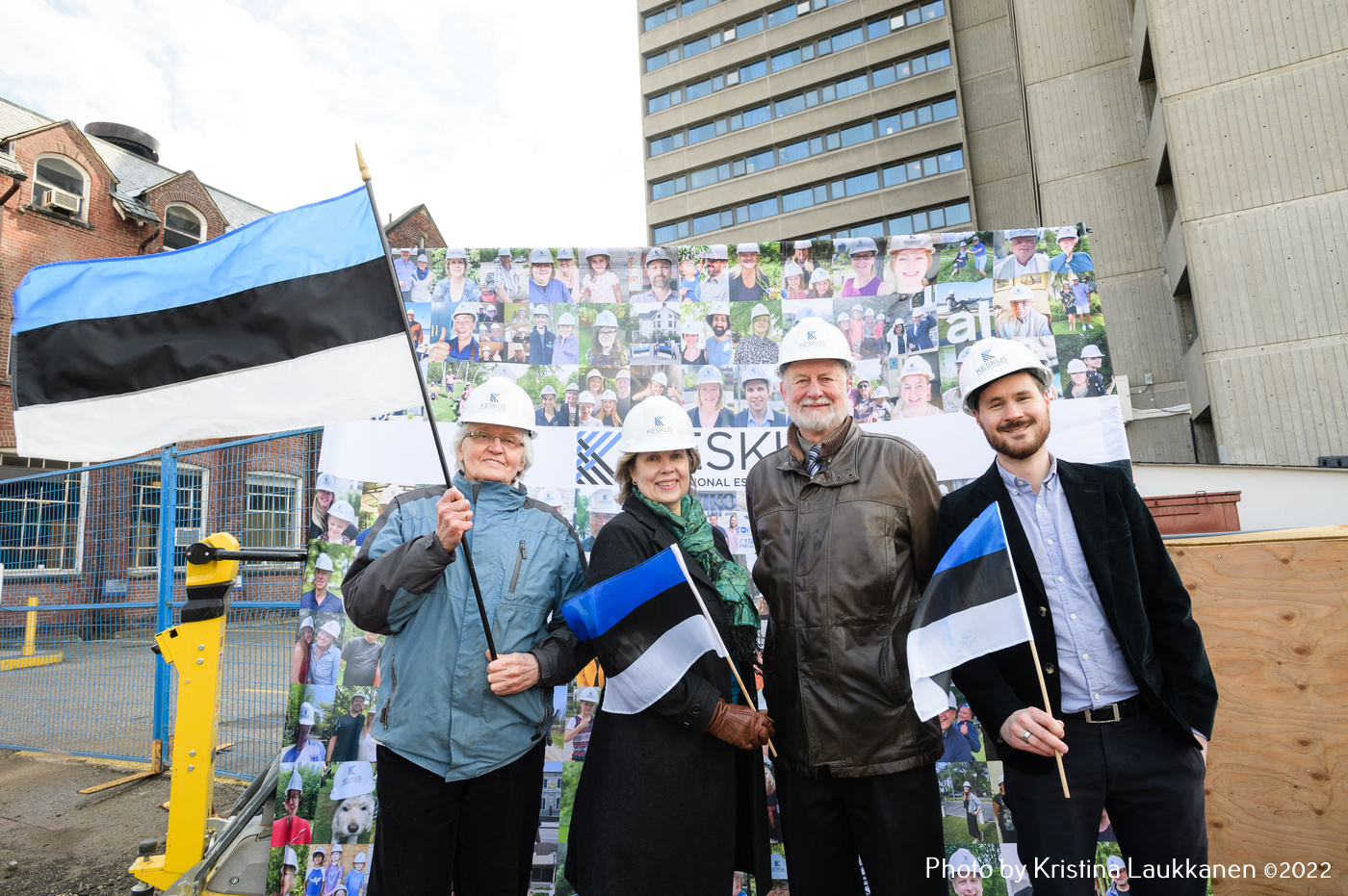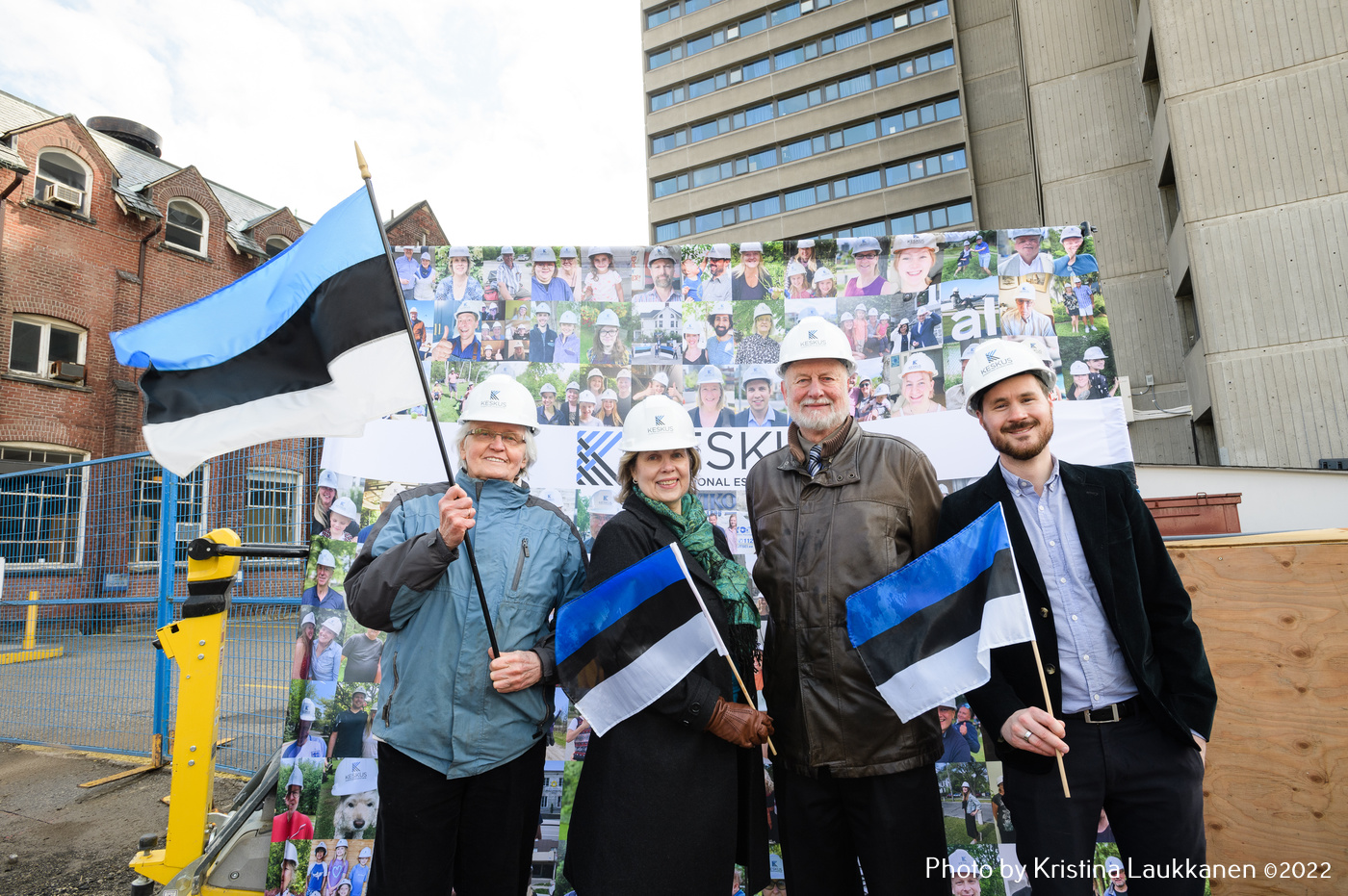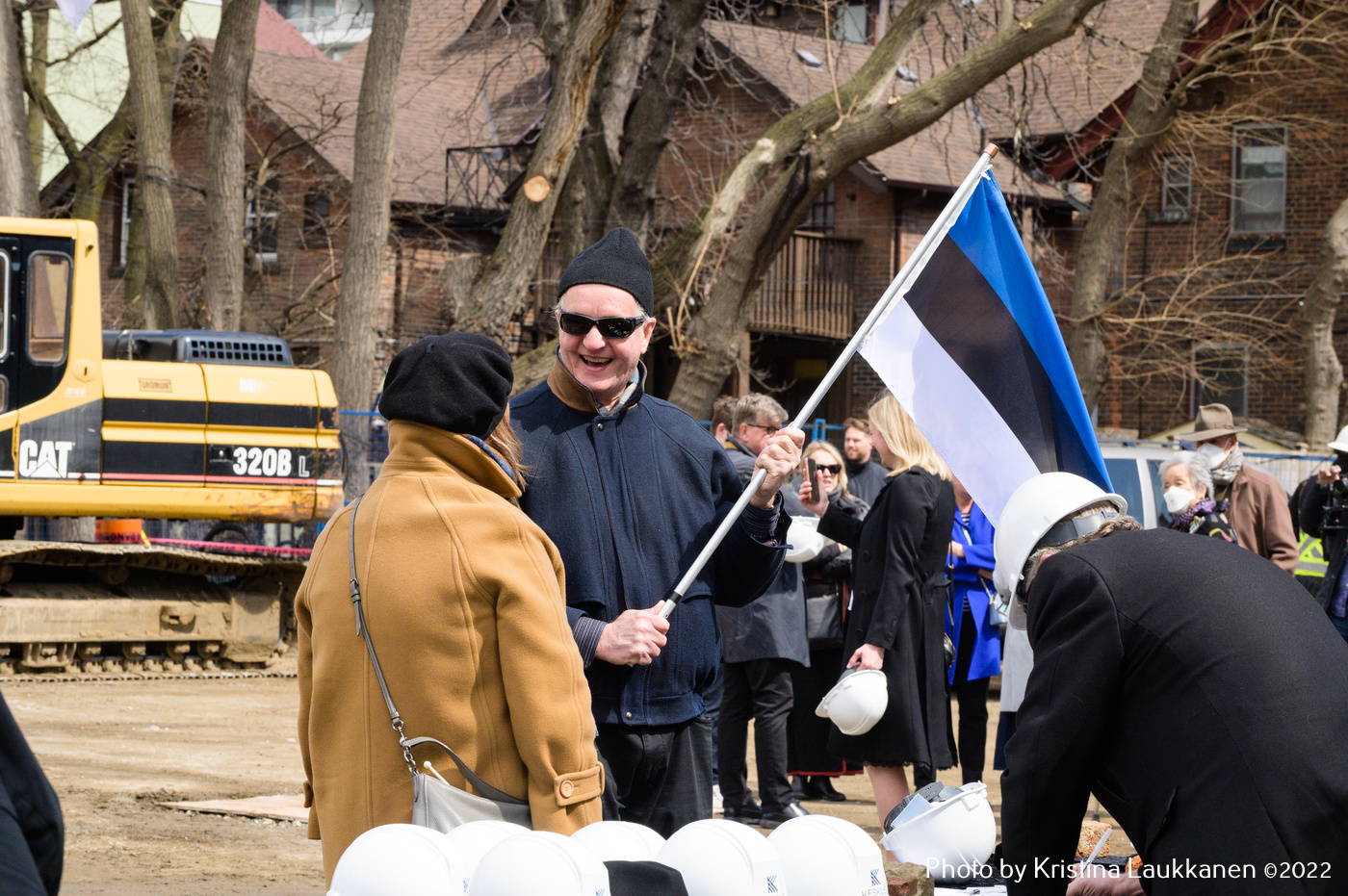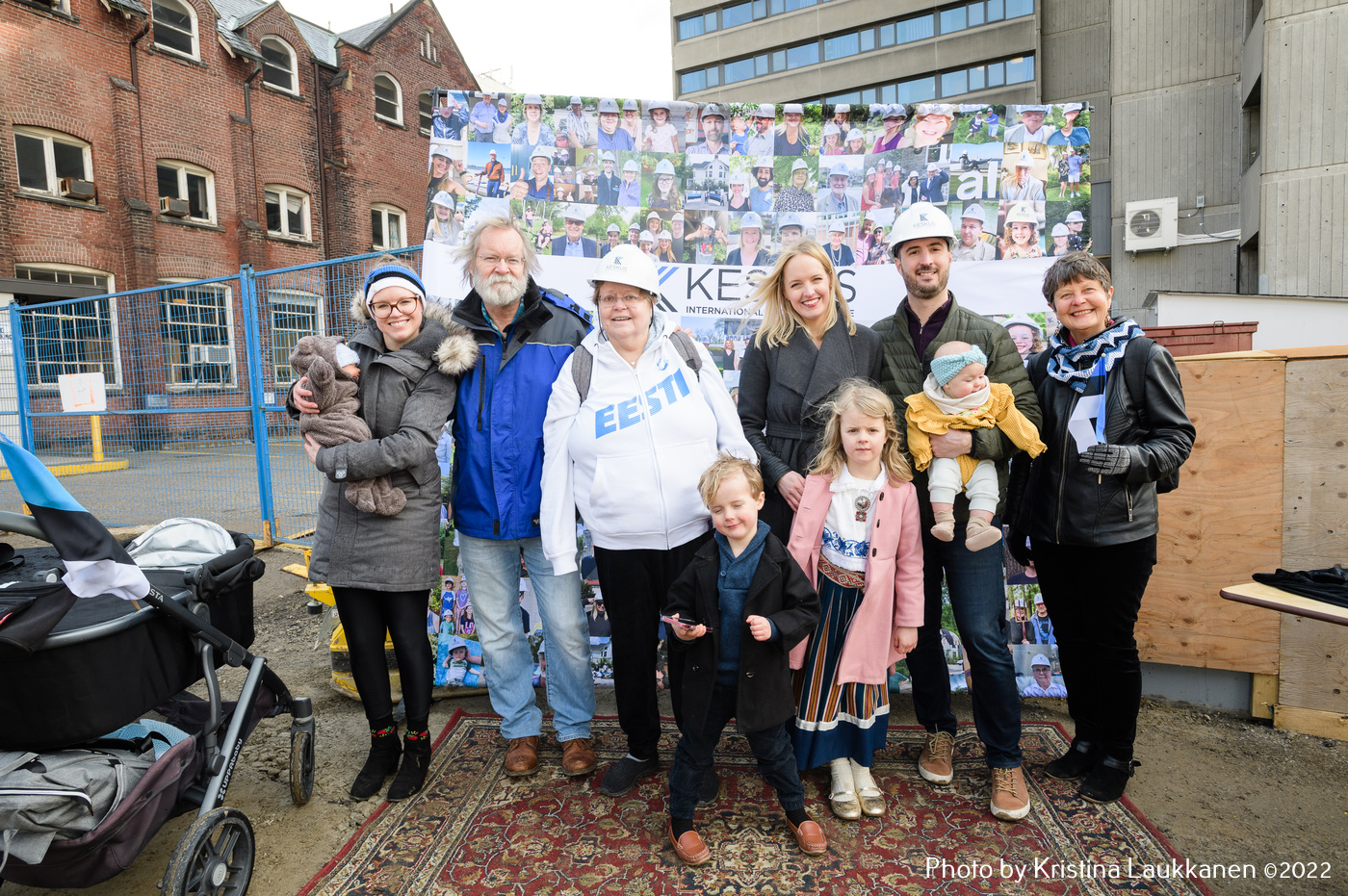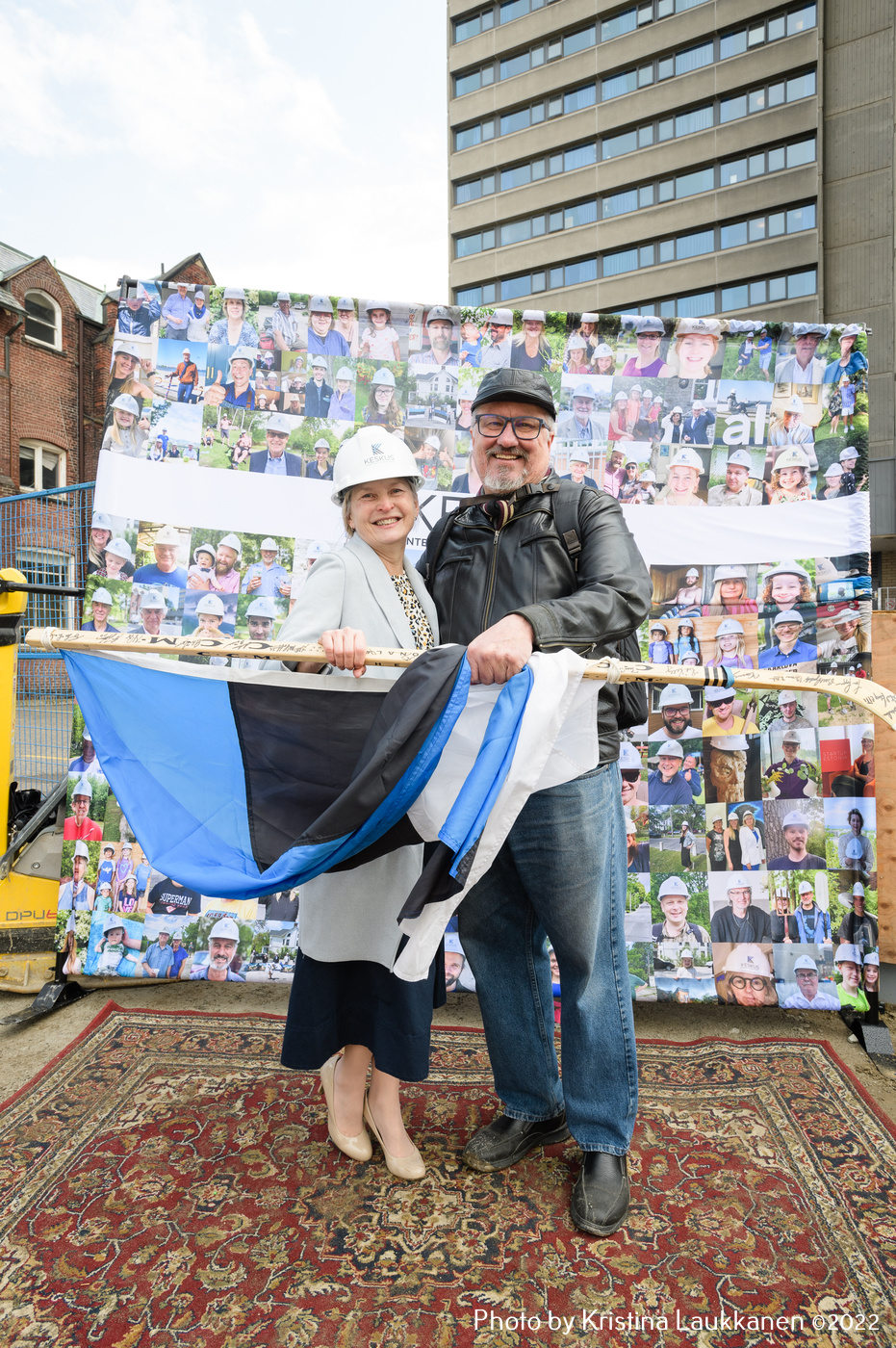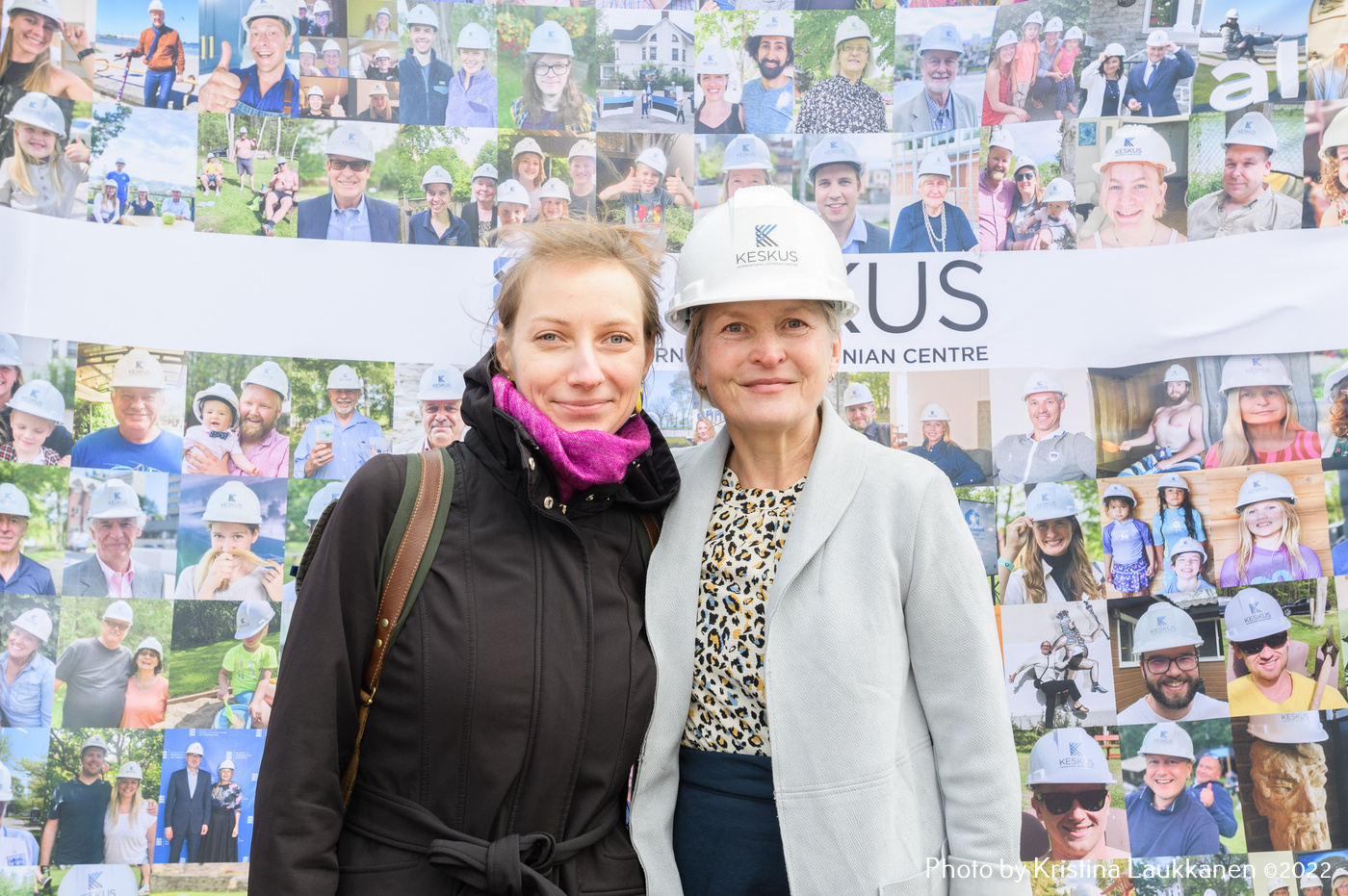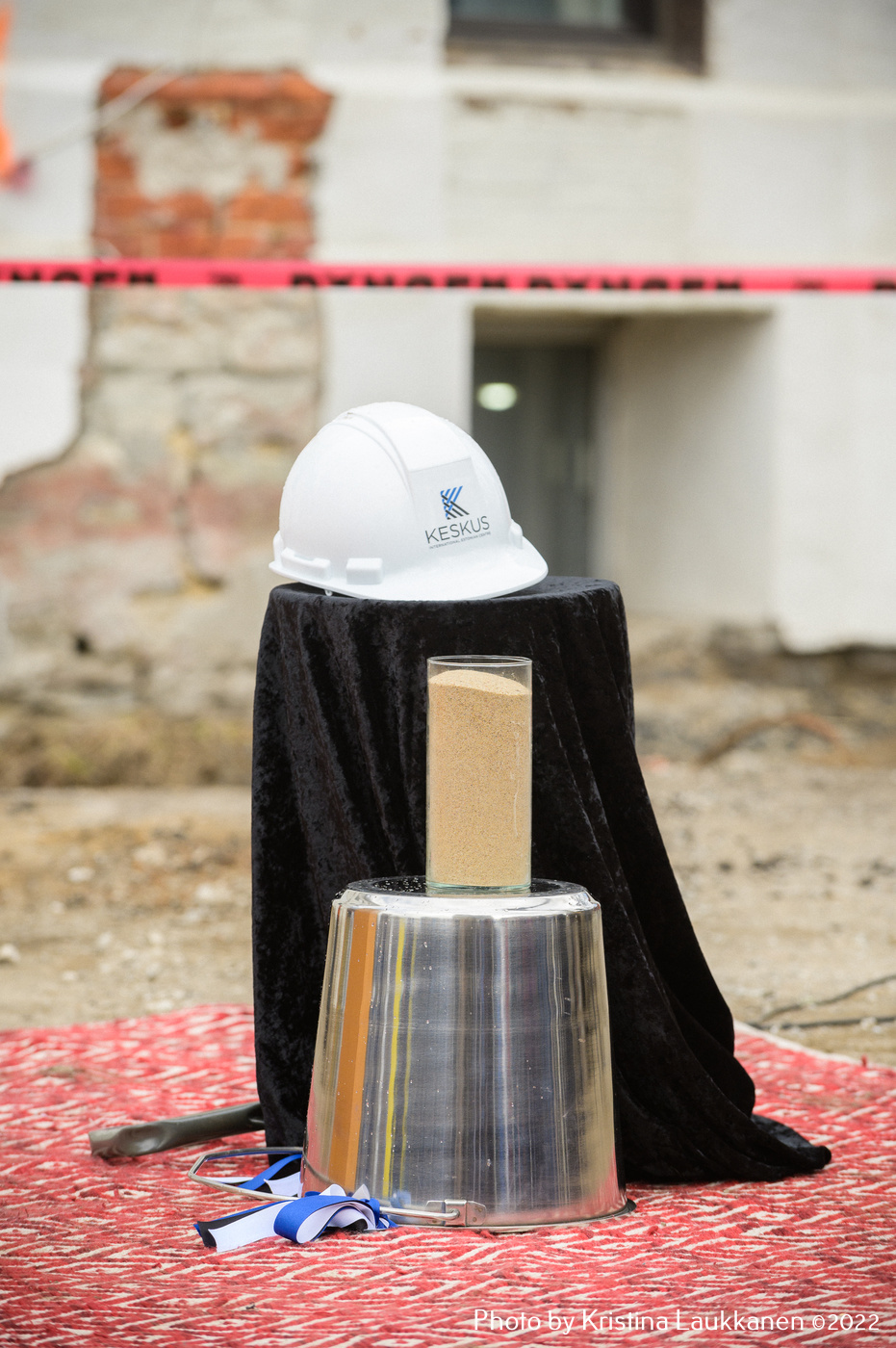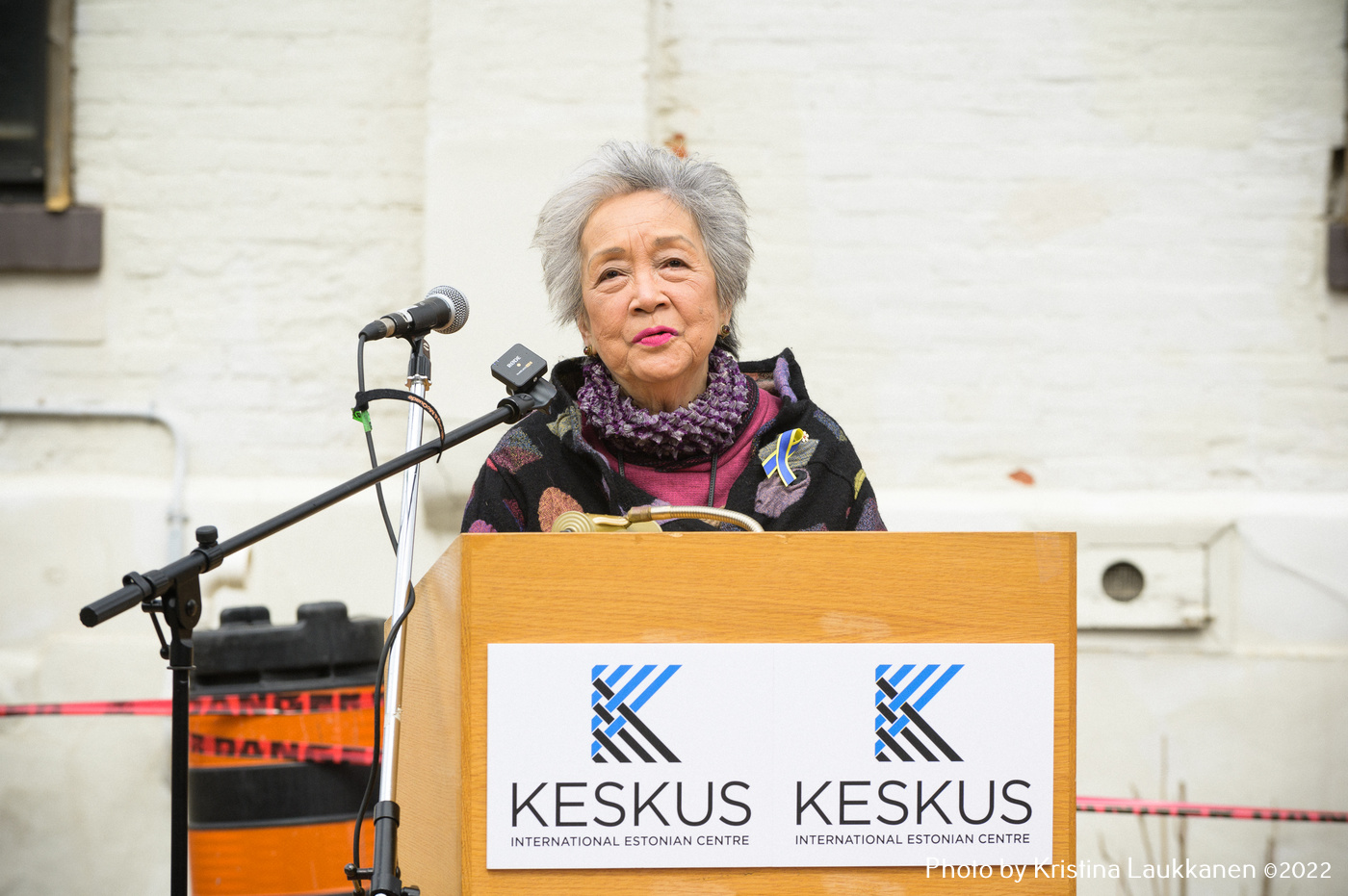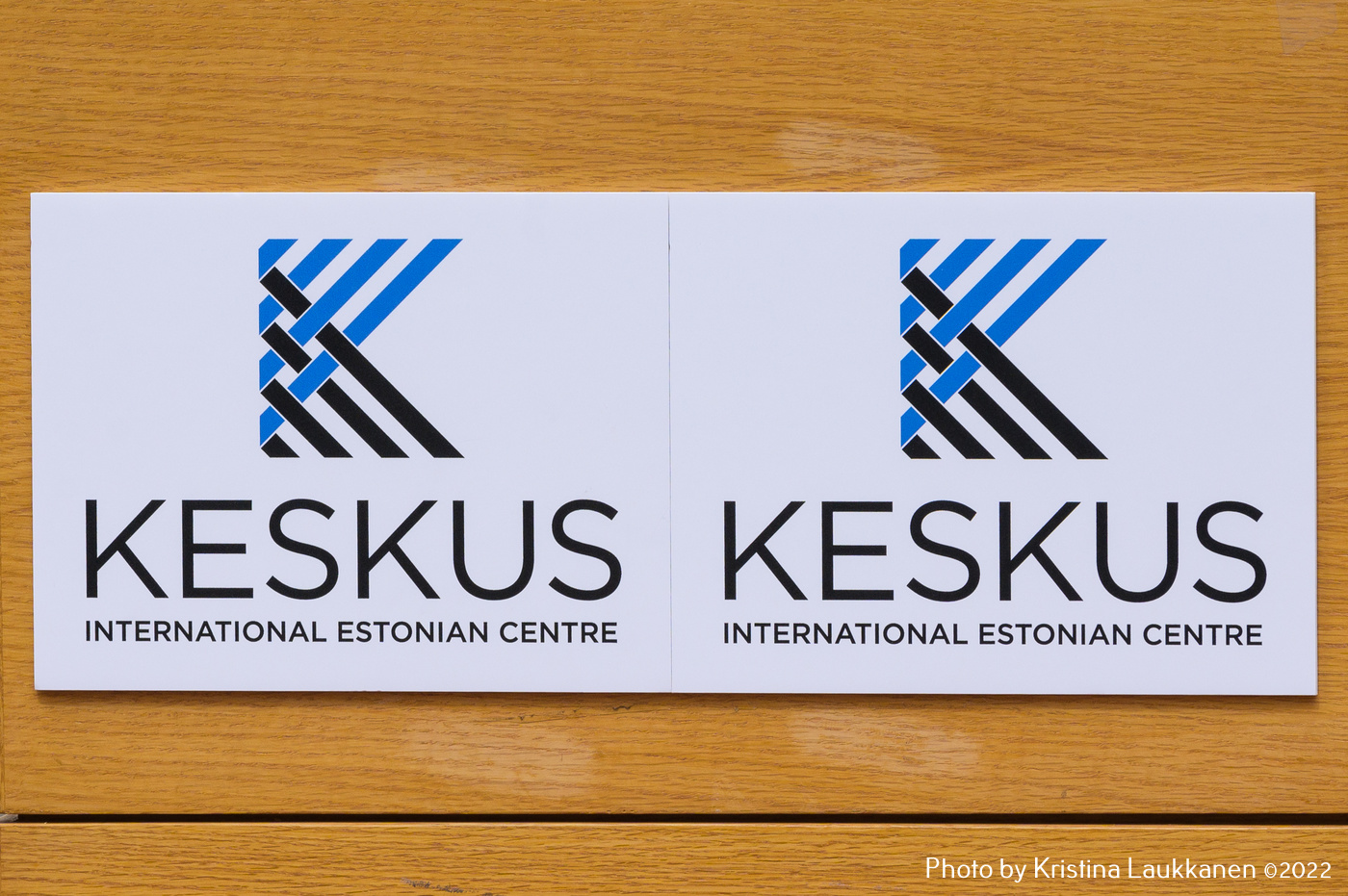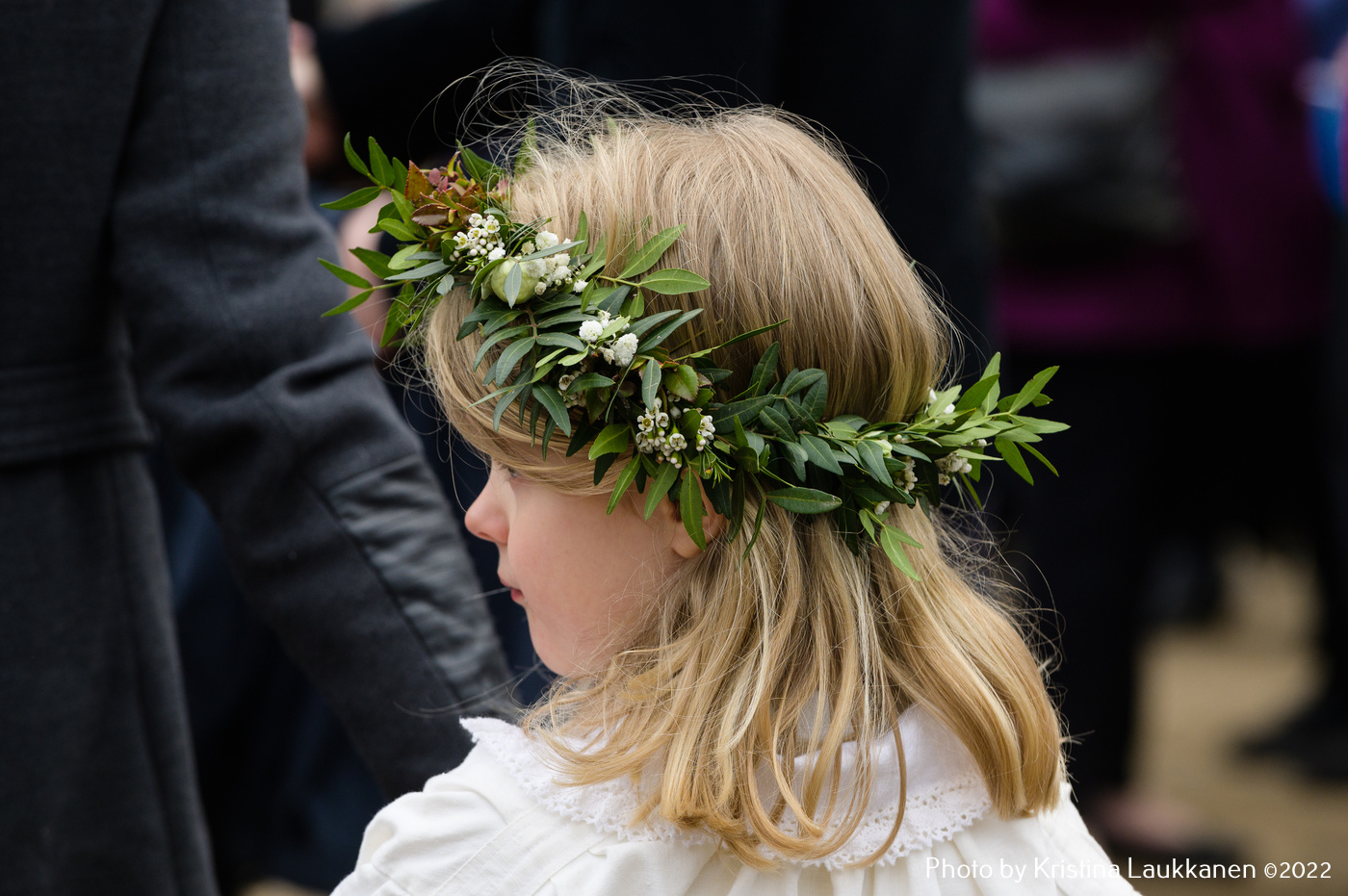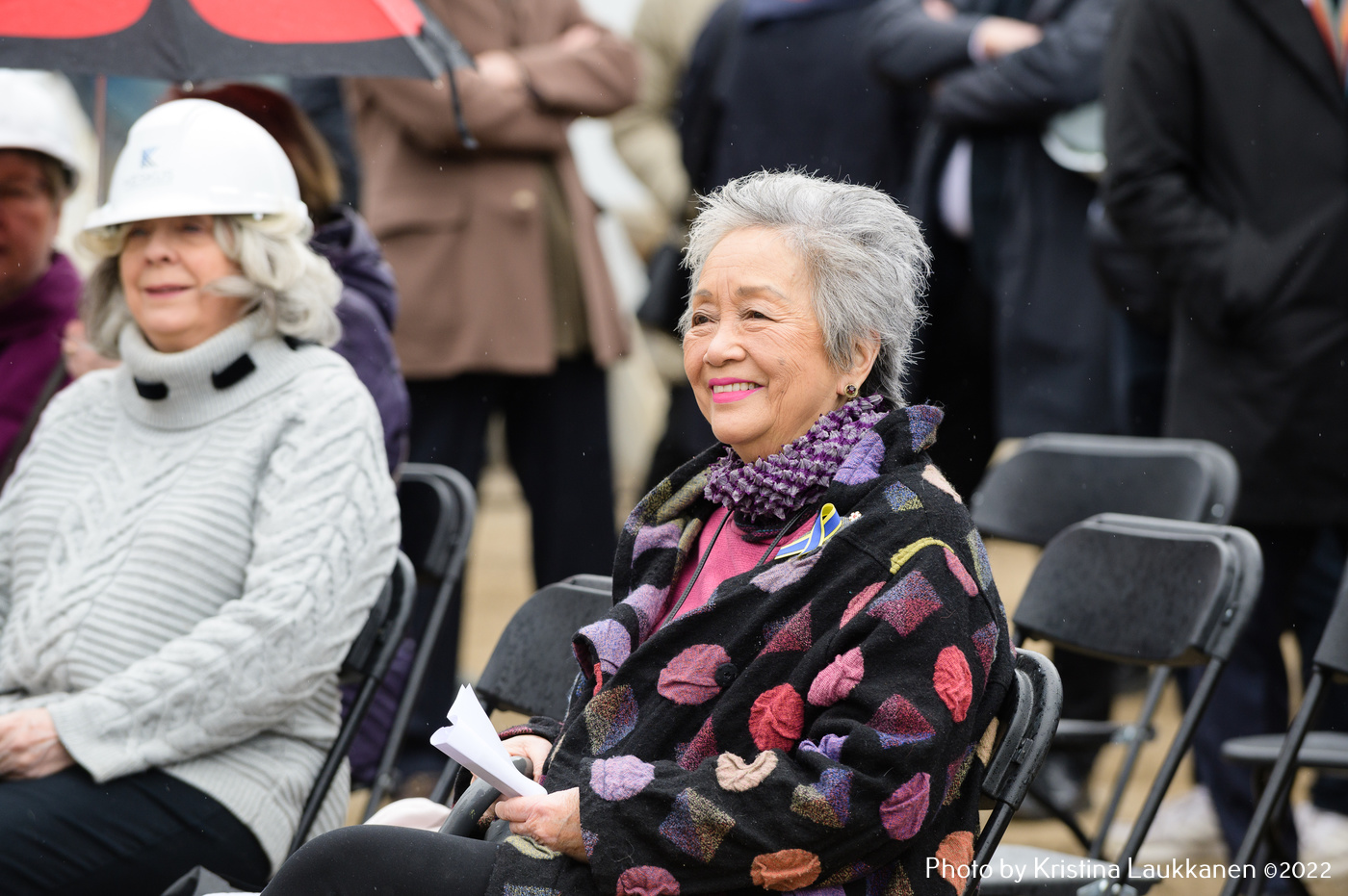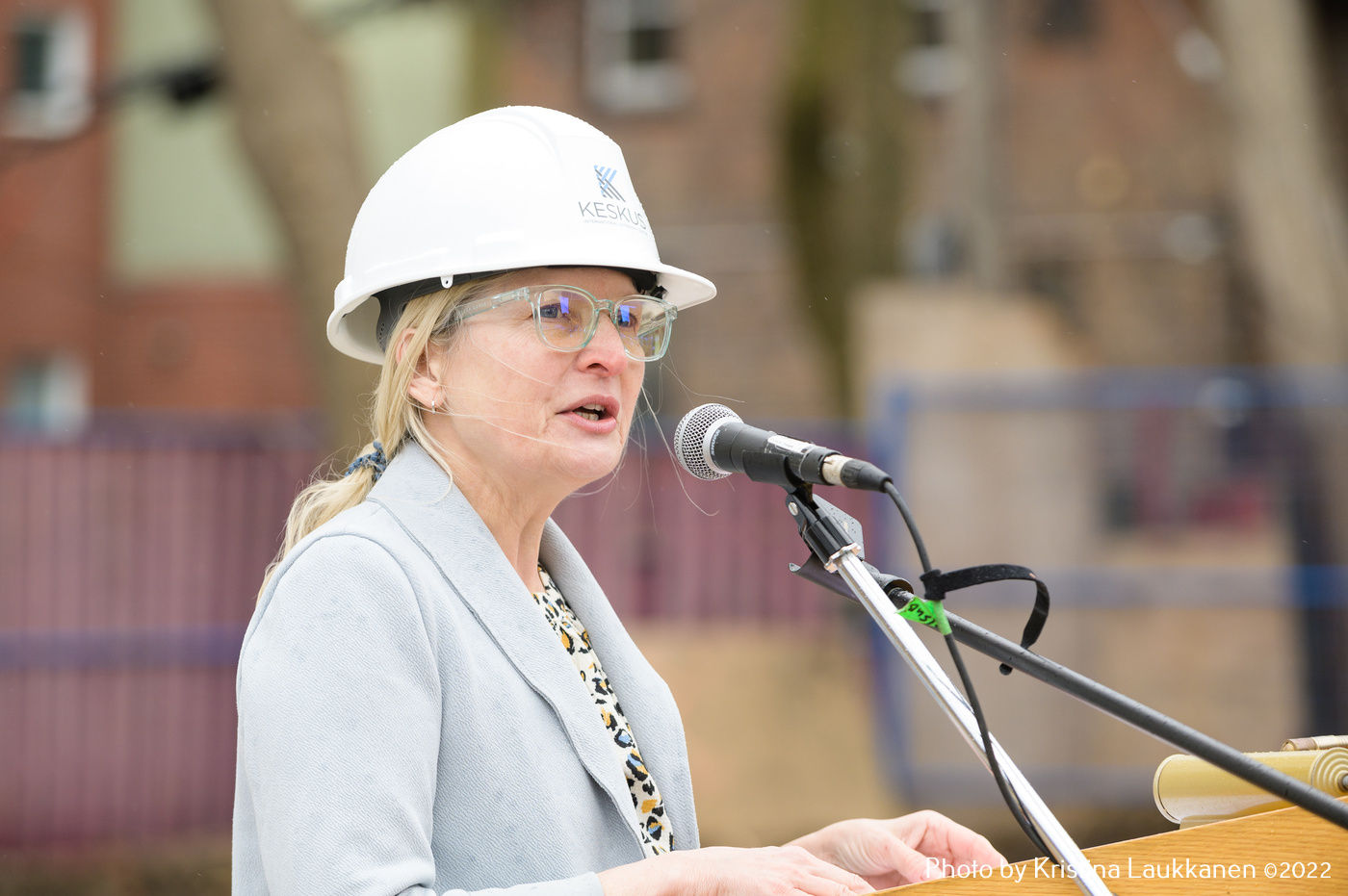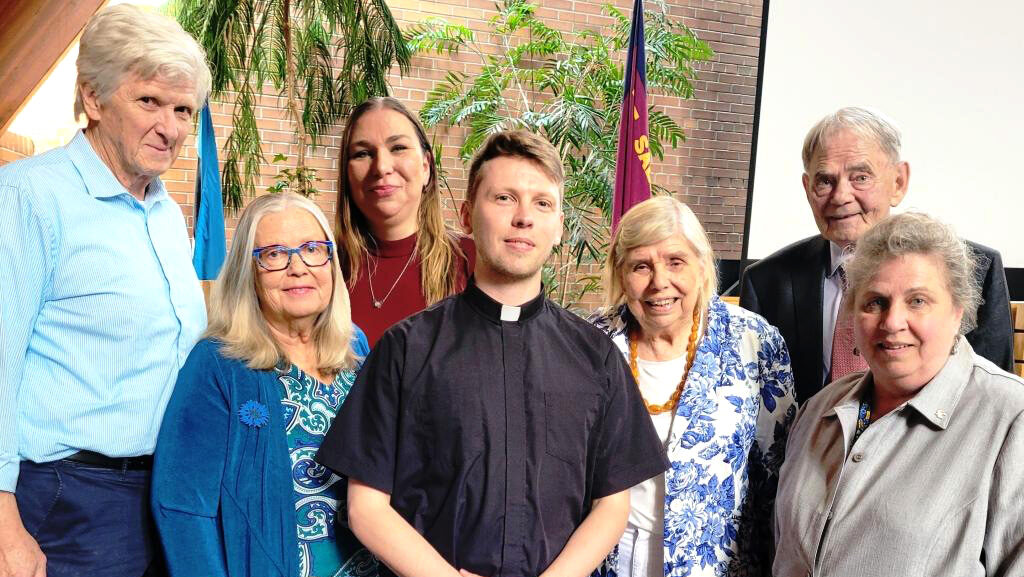And it wasn't just Estonians there. Among the crowd were Ukrainians, Latvians, and Lithuanians, showing support for their Estonian friends. There were also “Annexonians”, the neighbourhood residents with whom the centre has fostered a supportive relationship. As Ellen Valter, Project Lead, has emphasized, this will be a welcoming space for all.
Of course, this sentiment would be incomplete without acknowledging the First Nations, Inuit, and Métis peoples that live and have sustained the land that Canadians call home. In Toronto, she acknowledged the Mississaugas of the Credit First Nation, the Anishnabeg, the Chippewa, the Haudenosaunee, and the Wendat peoples.
Linguistically, there were also opportunities to welcome attendees through teaching the Estonian language: “tere”, “tere tulemast”, “aitäh”, and the combination of words that makes up the KESKUS name, “kes” (“who”) and “kus” (“where”).
The location is clear: 9 and 11 Madison Avenue. But the “who?” Well, the list is long, and the pages of Eesti Elu alone have held many stories of those team members, donors, and advisors who have given their best to bring the project to fruition. Valter credited all those involved on the four-organization steering committee that consists of the Estonian Foundation of Canada, Northern Birch Credit Union, Tartu College, and Toronto Eesti Maja.
The latter organization is especially key, in how it represents the roots placed in Toronto by Estonian refugees, so that the community could flourish, so that Estonian heritage could continue to evolve today.
Valter also thanked architect Alar Kongats, who envisioned “the map of Estonia being put onto the map of North America’s 4th largest city, Toronto.” Kongats' creations have not only caught the attention of Estonians, but Canada's leaders; namely, The Right Honourable Adrienne Clarkson, former Governor-General of Canada. Madame Clarkson, an architecture buff herself, said the design “fits perfectly with our neighbourhood.” Moreover, she fondly recalled how, in 2002, she gave Kongats his first Governor-General's Medal in Architecture.
What stood out most from her speech, however, was the way she related her own experience fleeing to Canada when the Japanese occupied Hong Kong ; how she was “exchanged one for one” by the Red Cross and arrived in Canada on the MS Gripsholm, a ship that many Estonian-Canadians will be familiar with. Linda Turu, who was attending the groundbreaking, remarked how her own family arrived at Pier 21 in Halifax on the very same ship, saying “It's a small world. Everyone is connected.” Indeed, as Madame Clarkson affirmed with attendees, “We're all Annexonians. We're all Canadians.”
In reciting Jaan Kaplinski's poem “Our Shadows”, a poem that reminds us of the cycles of life and the tireless work of the Estonian people, Madame Clarkson left attendees wondering about how this project could be a type of rebirth.
This rebirth could be from a cultural angle, as Liisa Käärid, chair of the Estonian Arts Centre board, illuminated. She noted how KESKUS will be a flagship, a place “where the rest of the world can come to collaborate with Estonian culture and create something new.”
It could be a rebirth for openness, as Estonia's Ambassador to Canada Toomas Lukk indicated; where Estonians build “a bridge across Estonian communities in Canada” and Canada's multicultural society.
It could be a rebirth for families. Blake Royer, Toronto Estonian House and International Estonian Centre board member, proclaimed his desire to ensure that Estonian heritage is a core part of the upbringing of his and his wife's children.
By 2023, all 36,000 square feet of the space will be a testing ground for these possibilities. Certainly, a wave of exciting activity like this has been moving down Bloor Street recently. For instance, Ward 11 City Councillor Mike Layton spoke of the Blackhurst Cultural Centre being created by Toronto's Black community at Bathurst Street. He voiced his support and encouraged the continued investment in facilities like these. And as was relayed in a message from The Honourable Chrystia Freeland, Deputy Prime Minister, “Canada would not be the country it is without the strength of diaspora communities like the Estonians.” She believes it is now more important than ever to celebrate their contributions.
Across the afternoon's speakers, support for Ukraine's freedom, and horror over the atrocities taking place there, were expressed. Concluding the afternoon, Kaili Colford, the Estonian Arts Centre co-vice chair, related the relationship between Ukraine and Estonia poignantly with regard to her daughter, Berkeley, who is of both Estonian and Ukrainian descent. Berkeley is also of the youngest generation, for whom the centre will be a part of their memories from early on. Fittingly, it was over her hands that sand from the shores of Estonia was poured, so that the youngest, too, have touched this building from its foundations.
The rain came down heavily. Fortuitous gusts of wind blew. But then, the sun came out, poetically shining on this rectangular plot at Bloor and Madison. And so the next chapter of the Estonian community proceeds, with the expansion of Toronto's very own Estonian village.
Written by Vincent Teetsov, Toronto
Photos by Kristina Laukkanen (2022)
